Day 83 - Salar de Uyuni

The salt flats in Bolivia are probably one of its most unique offerings. We went on a 3 days/ 2 nights tour of the salt flats which we booked through TransAndino a day before the tour left and booked on site after comparing with a few others. Munis' friend from university also joined us on this tour. There were a total of 7 of us in the 4x4 including our amazing guide and driver, Luis, and we couldn't have asked for better company. The three days were packed full of fun, banter and mind bending sites to explore.
Day 1 - Train Cemetery, Colchani, Salt Flats
We met at the TransAndino tour office in Uyuni early morning and left for the train cemetery which was a 30 minute ride away from the the town of Uyuni. It was a collection of old, abandoned trains left to rust in the middle of the dessert, which is now a rather strange but interesting tourist attraction. After exploring the site and unable to resist the urge to climb some of the trains we headed to a nearby salt factory.
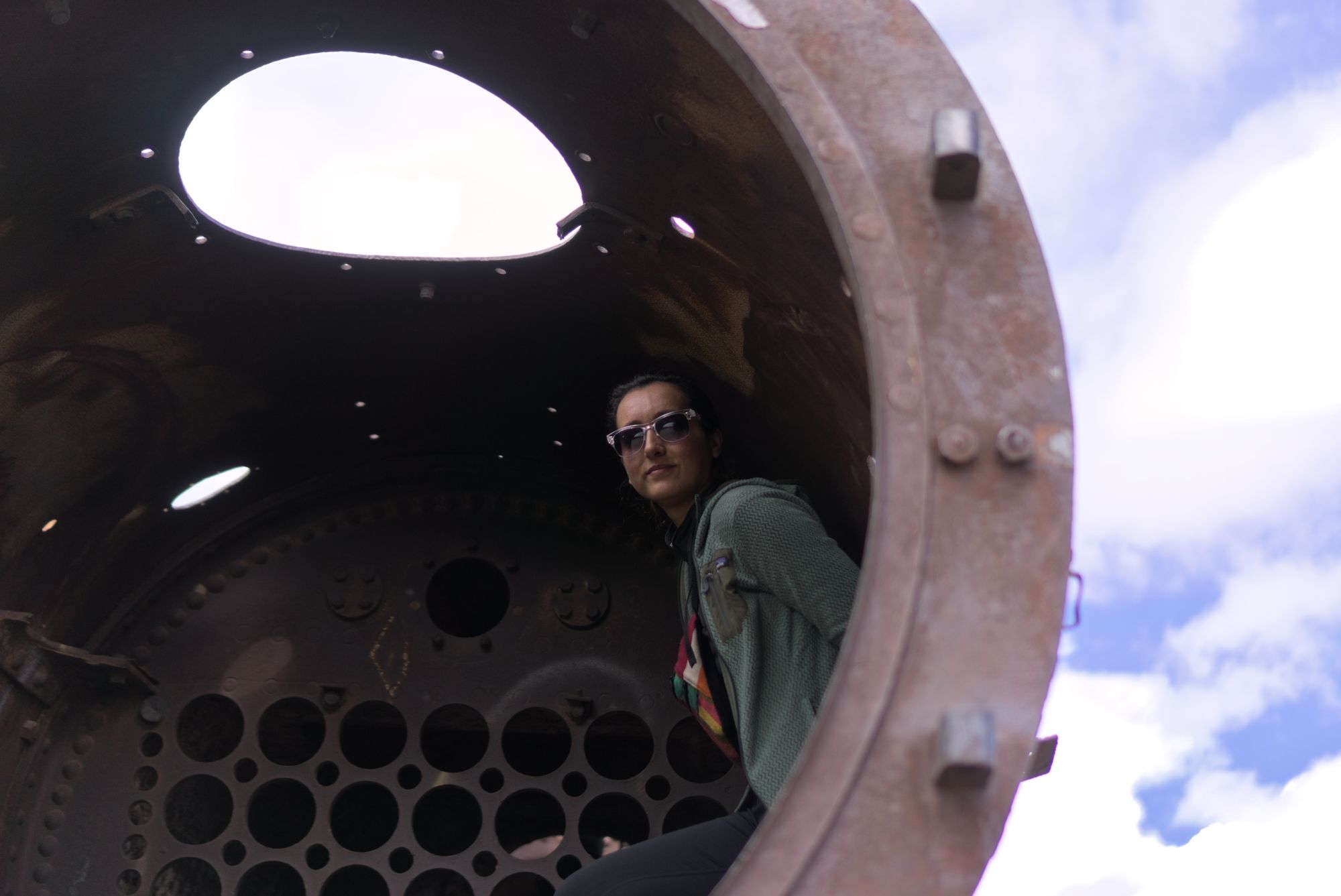
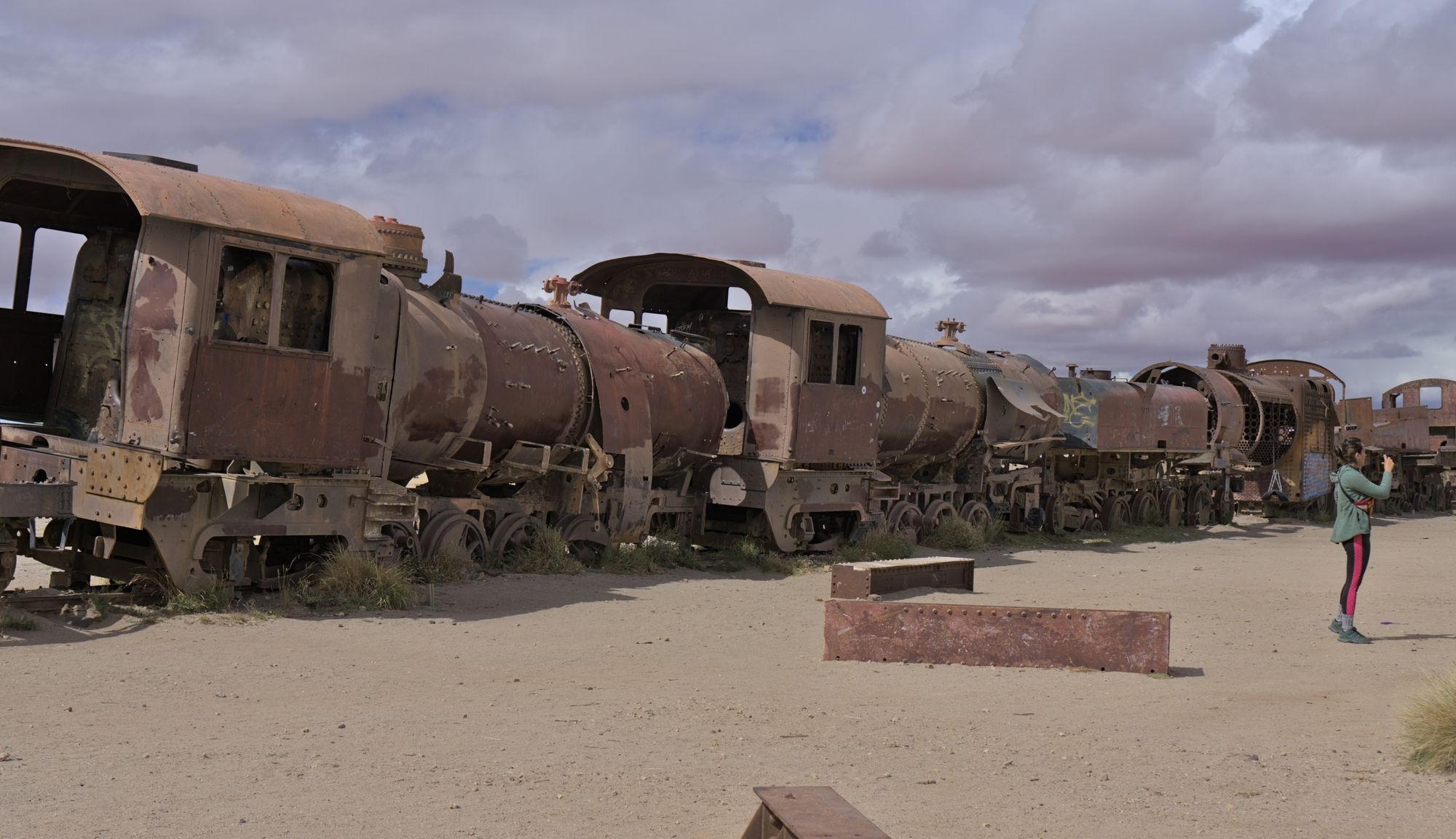
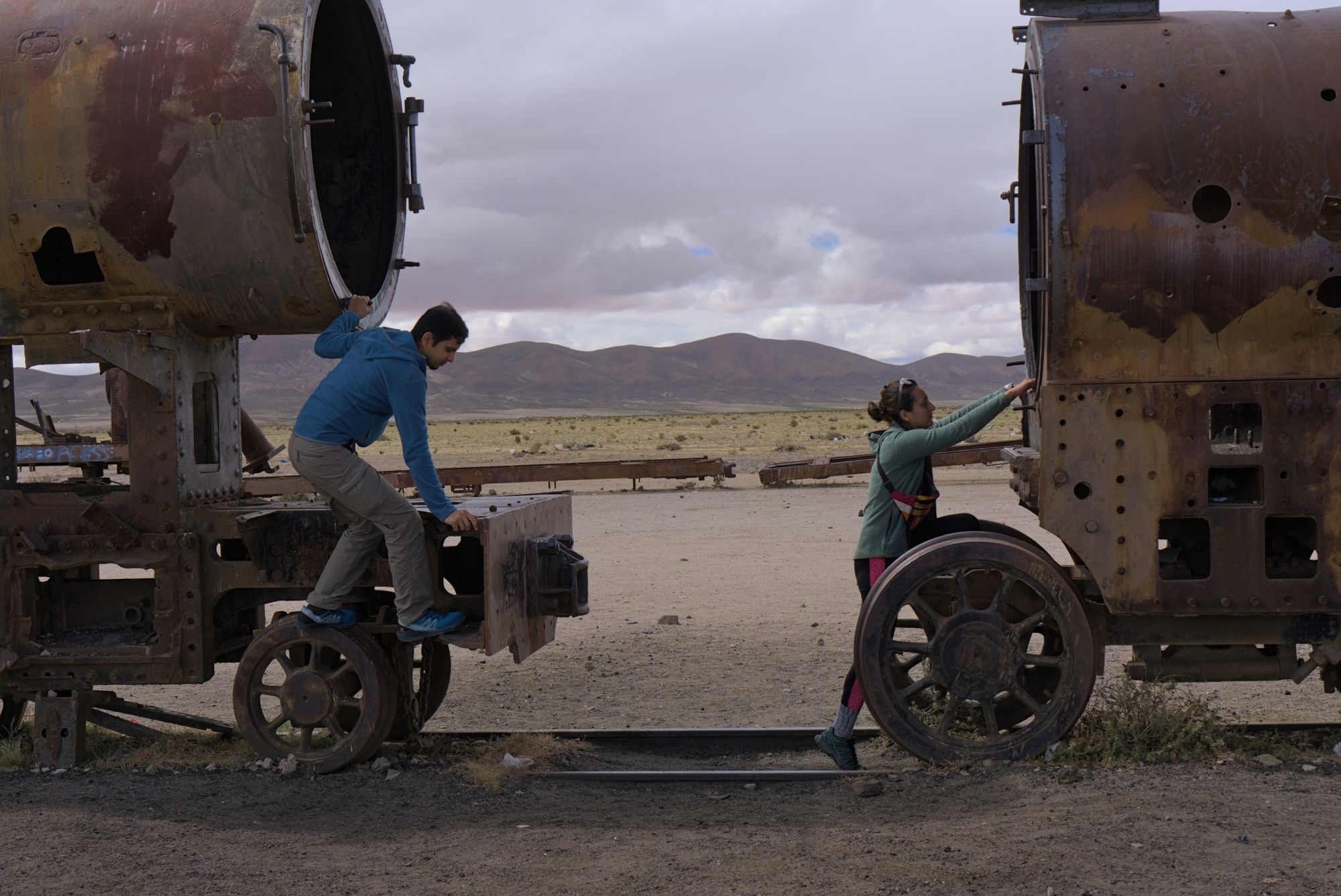

Our next stop was the Dakar monument in Colchani, which offered us our first glimpse of the white vista. The monument was erected in the year 2016 to welcome the Dakar rally in Bolivia. There was an area dedicated to flags of different countries, but we could not find a Pakistani flag in the mix. Our guide informed us that we could hang a flag of our country if we were carrying one with us, so for any future visitors, please take a flag of your country.

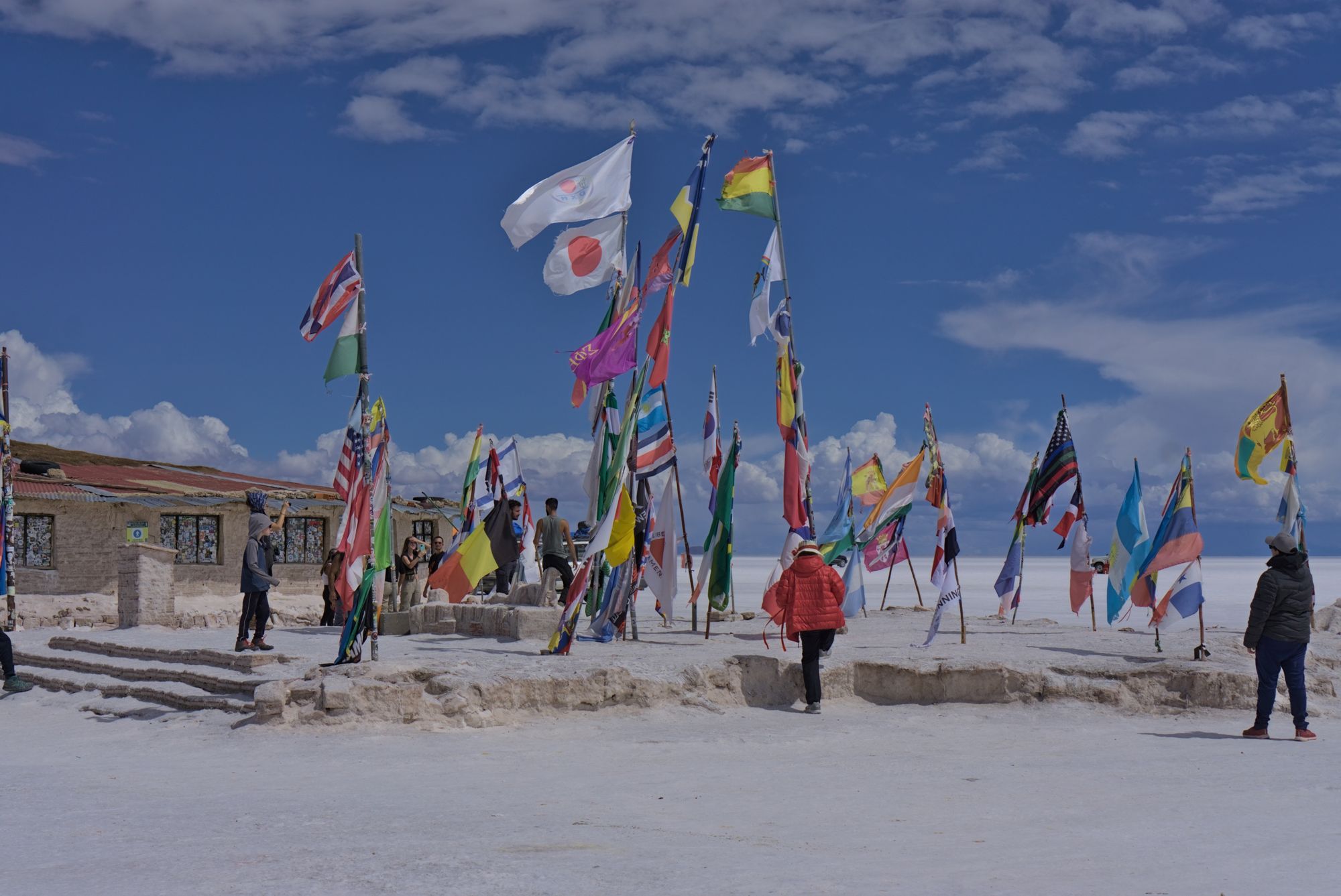
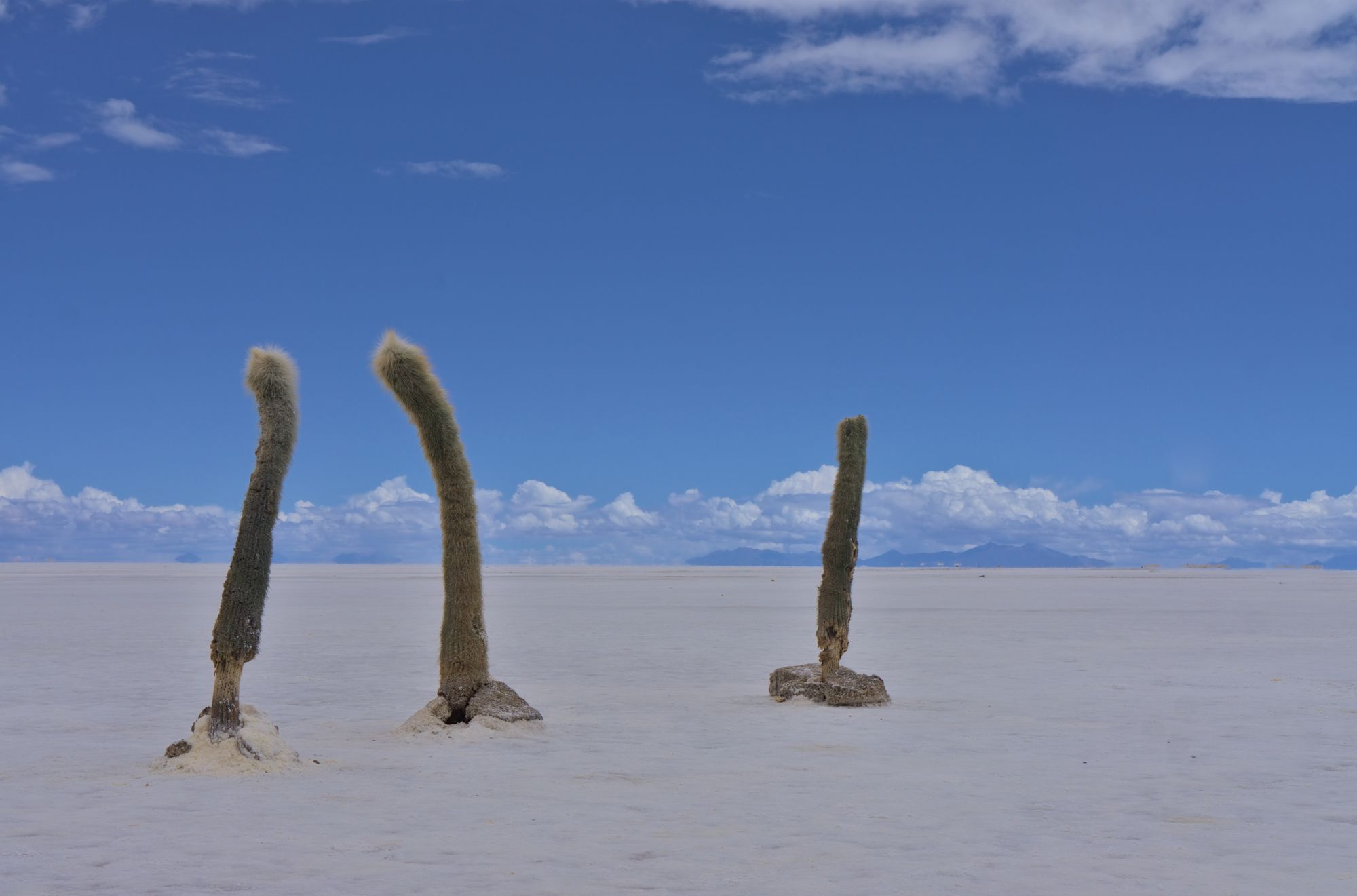
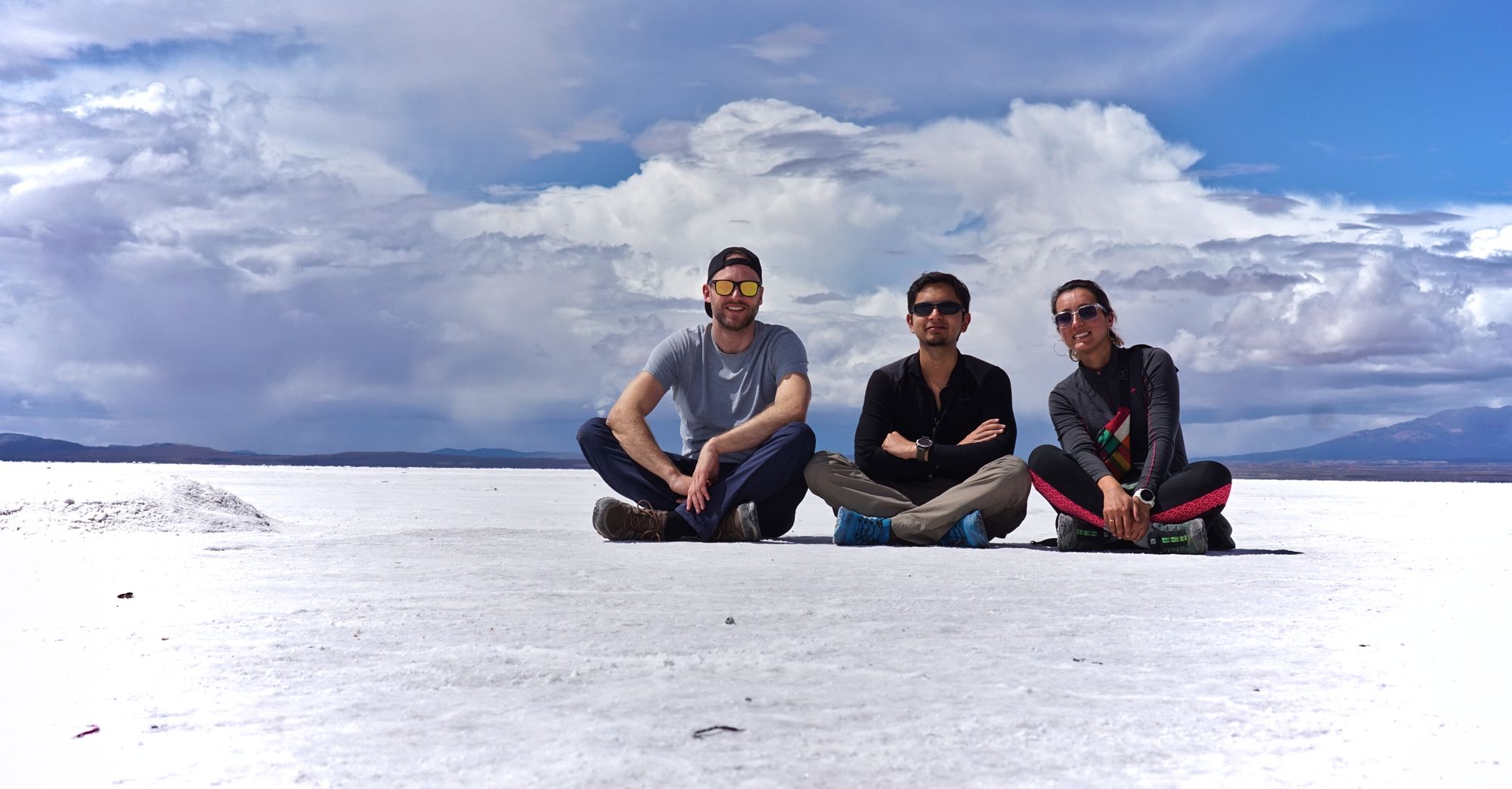
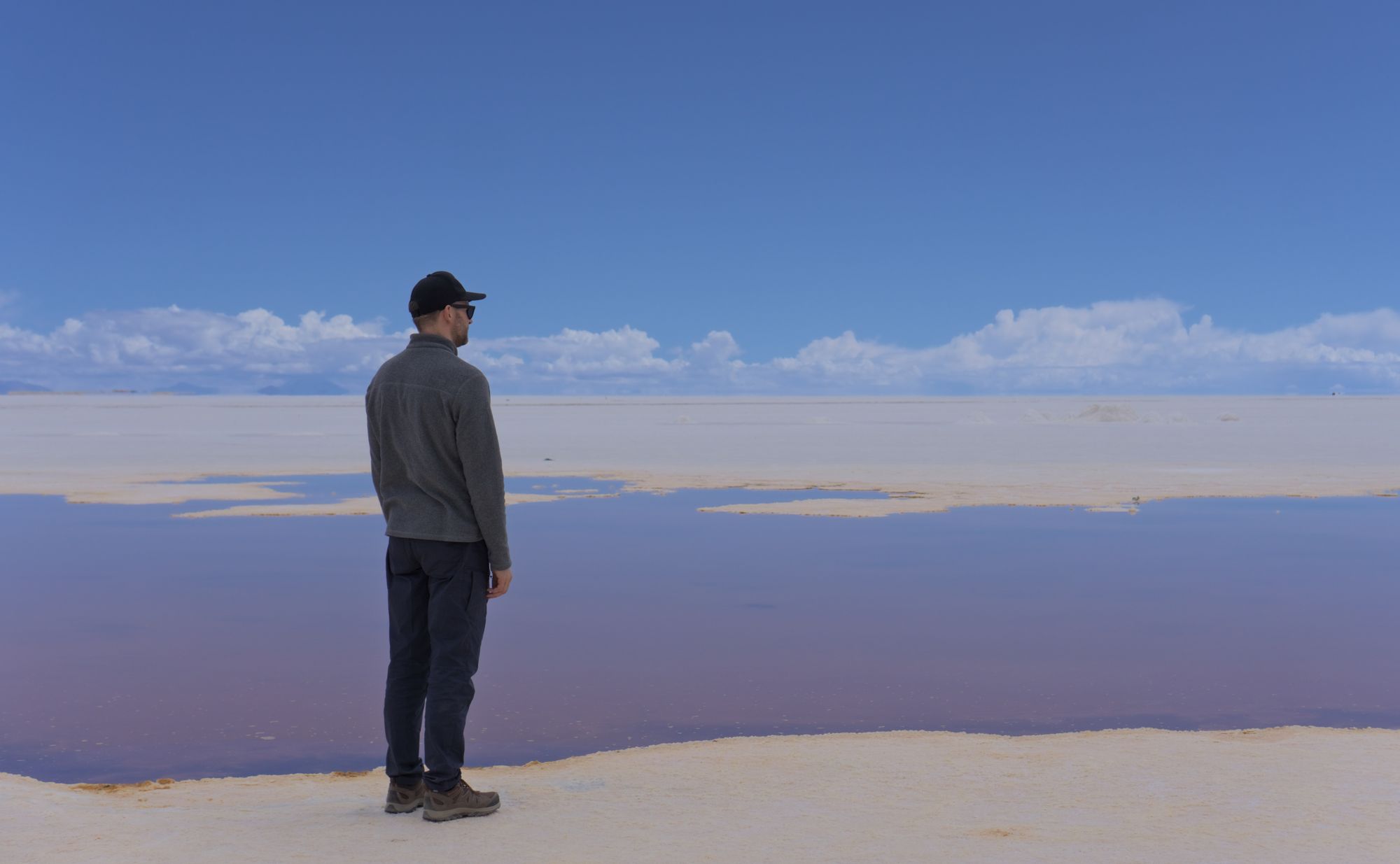
After some rest and a delicious meal at a restaurant on site, we set off for our most awaited destination of the tour, the actual salt flats. To say I was excited about what was to come next would be an understatement, but I was not prepared for what we were about to witness.
Of course, I had seen many pictures and watched countless videos of people at the salt flats before but never in my wildest imagination had I thought I would be visiting them in person one day. My heart started beating faster as we got nearer and nearer. However, what I saw and felt during our time there was quite unexpected. I was almost taken aback by the lifelessness of the place. The sound of salt crushing beneath my feet felt unnatural. There was the blue sky above and us traversing the soul-less grounds below. I am writing this blogpost in hindsight, but to this day I cannot fully fathom the experience.
Nonetheless, it was a peculiar adventure and we got to take some amazing pictures, thanks to Luis' creativity and photography skills (as you can see below).

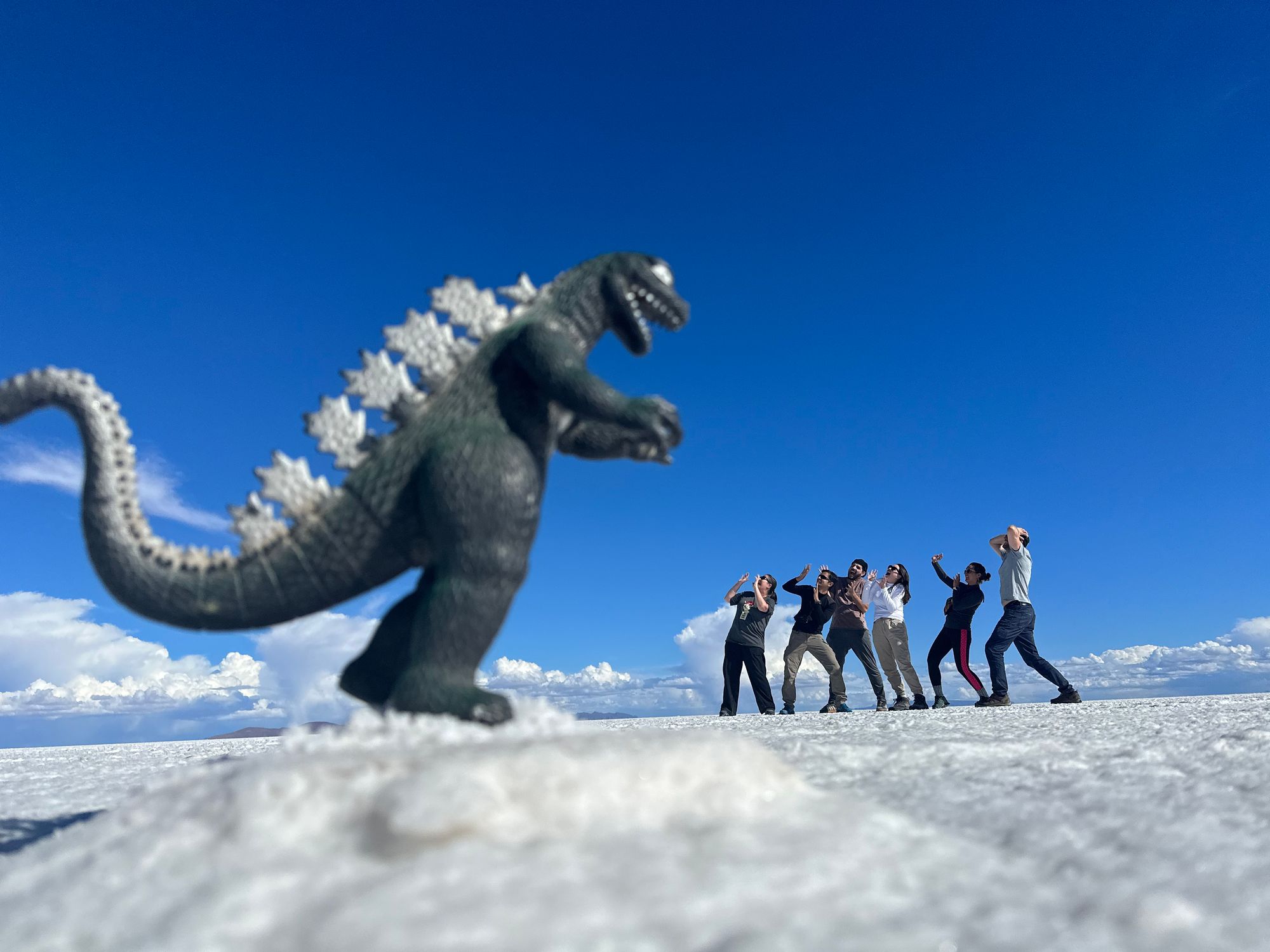
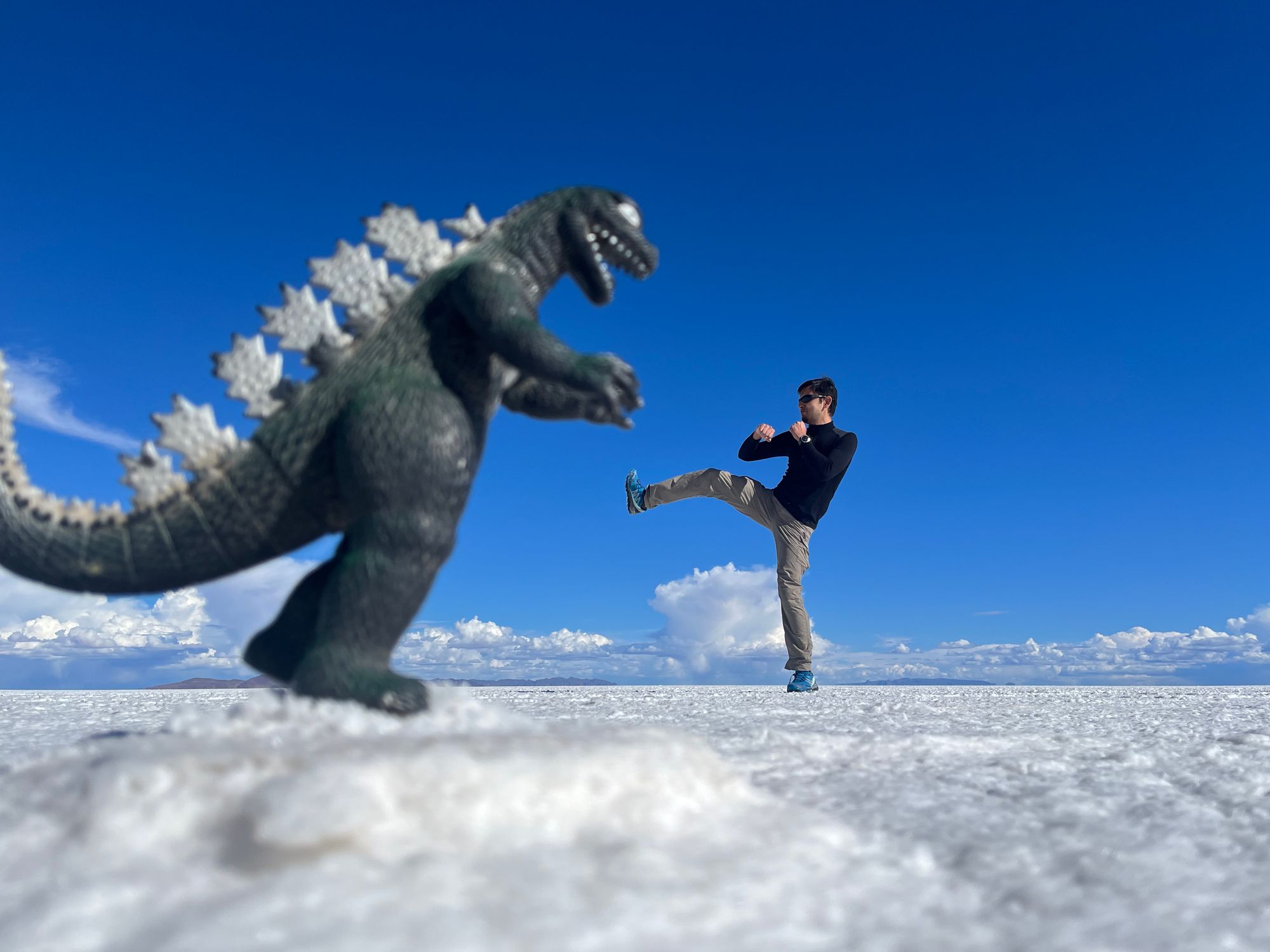
During the rainy season the salt grounds become a giant mirror, but the past few days had not seen any rain, there was a collective disappointment amongst us having walked away without experiencing the famed mirror effect of the salt flats so our guide gave us a choice - as per our itinerary, we were supposed to head to the cactus forest but if we as a group were willing to forego that we could go looking for the water, which in the end, we were lucky enough to find (and were the only ones there!). This was truly a mind boggling spectacle and according to Munis, the mountains in the distance which appeared to be floating seemed like a 'computer glitch', as you can see below.
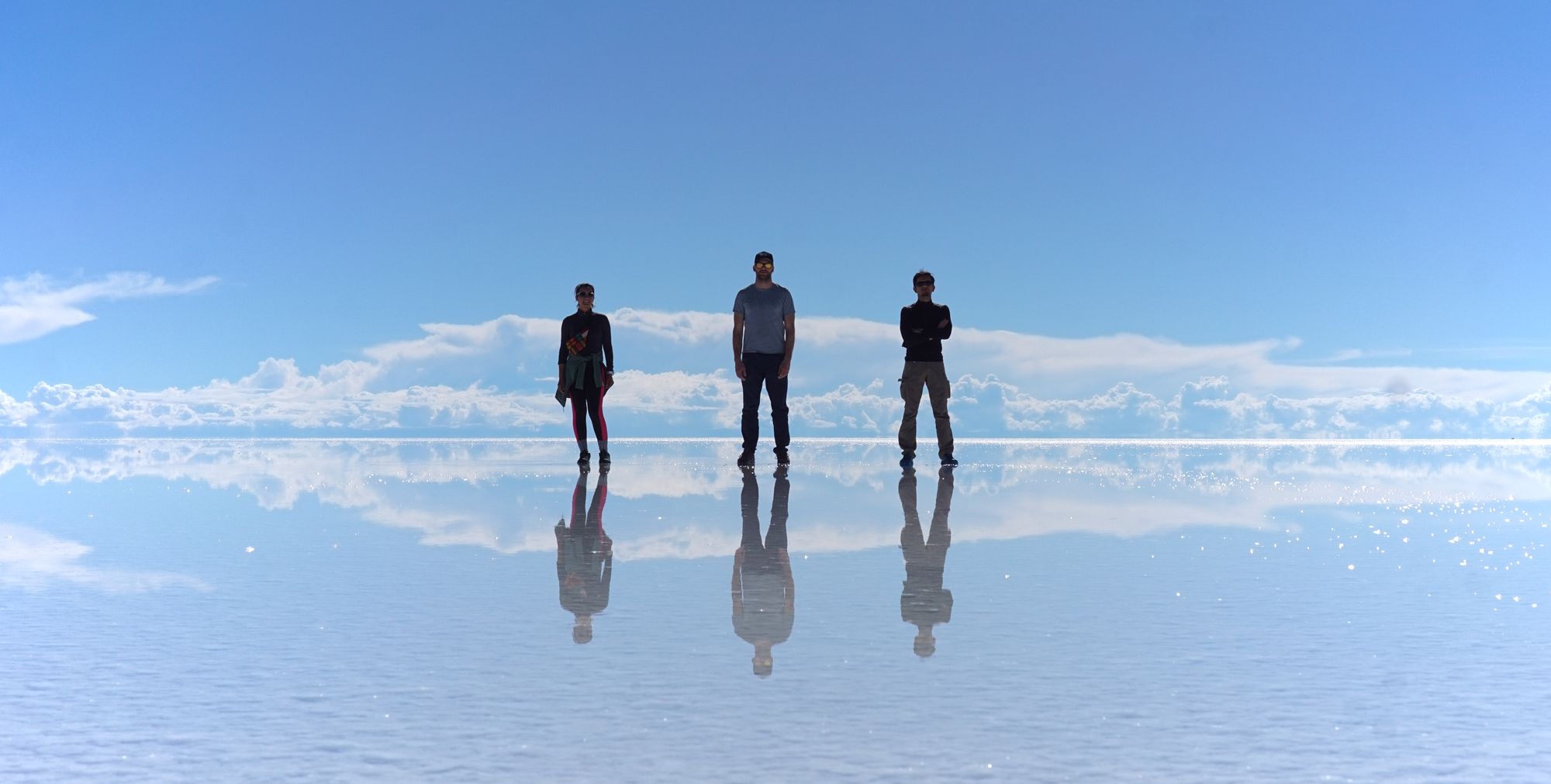

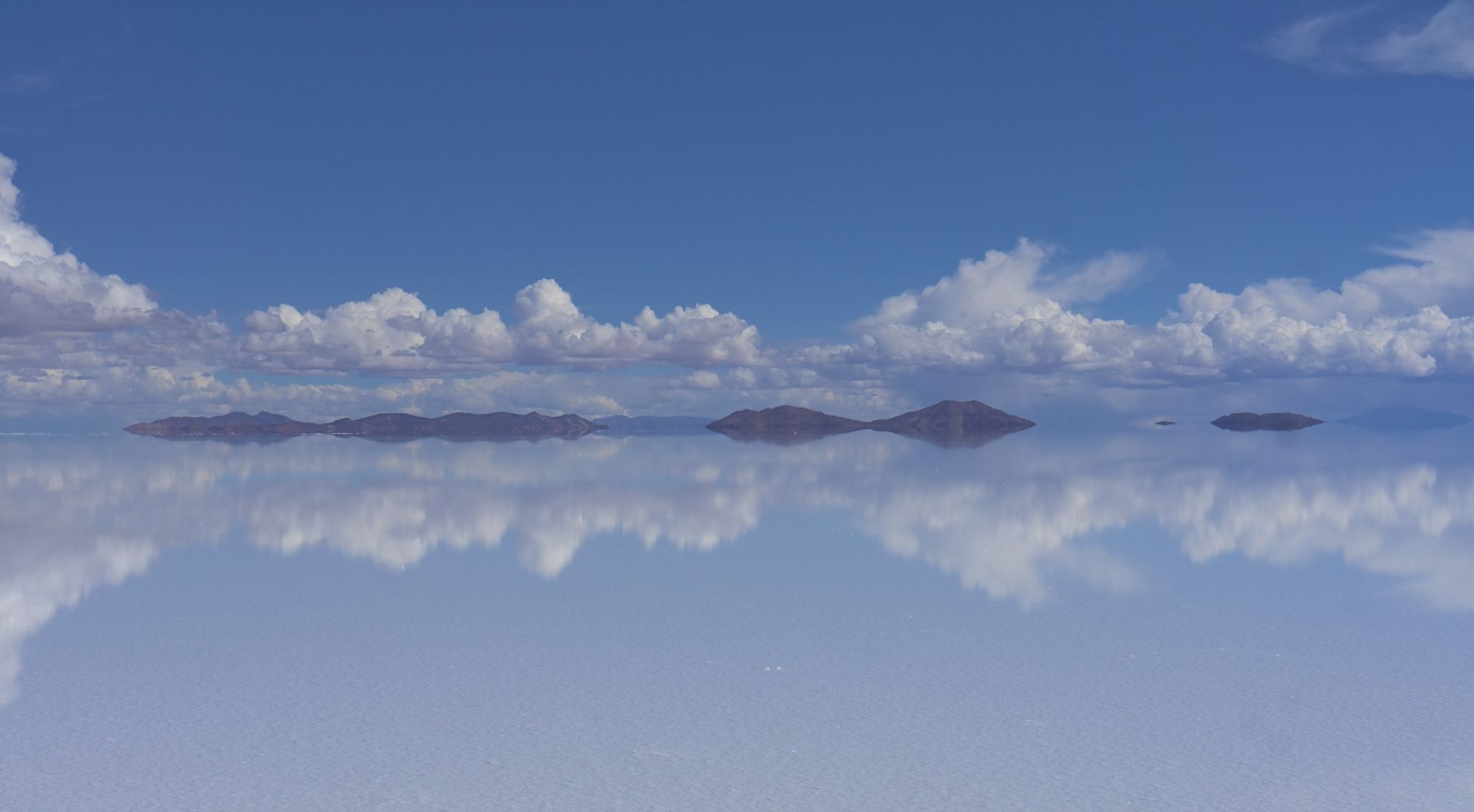
We soon made our way to view the sunset from a location near our accommodation for the first night, where we enjoyed a lovely spread of drinks and snacks and called it a day.
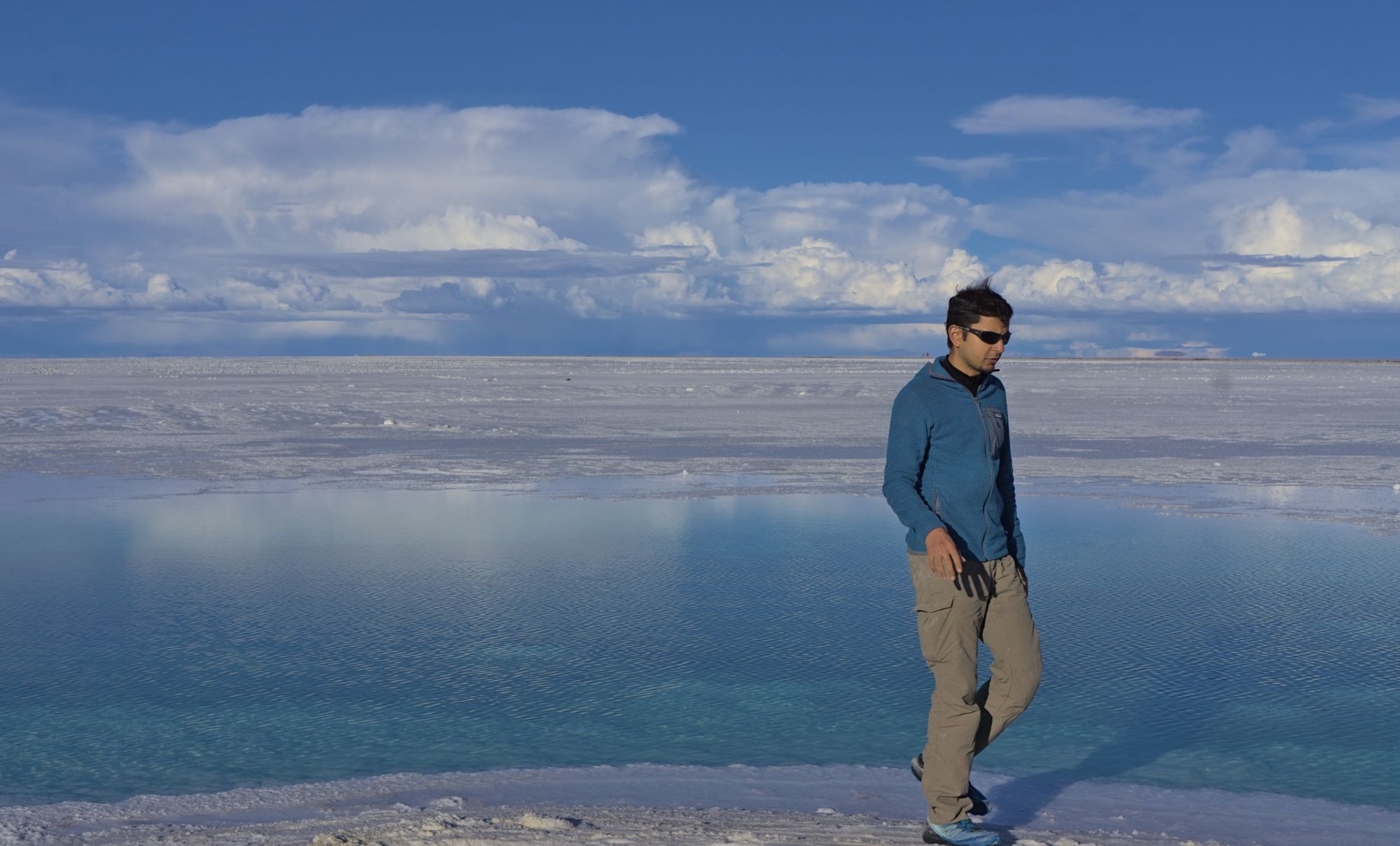
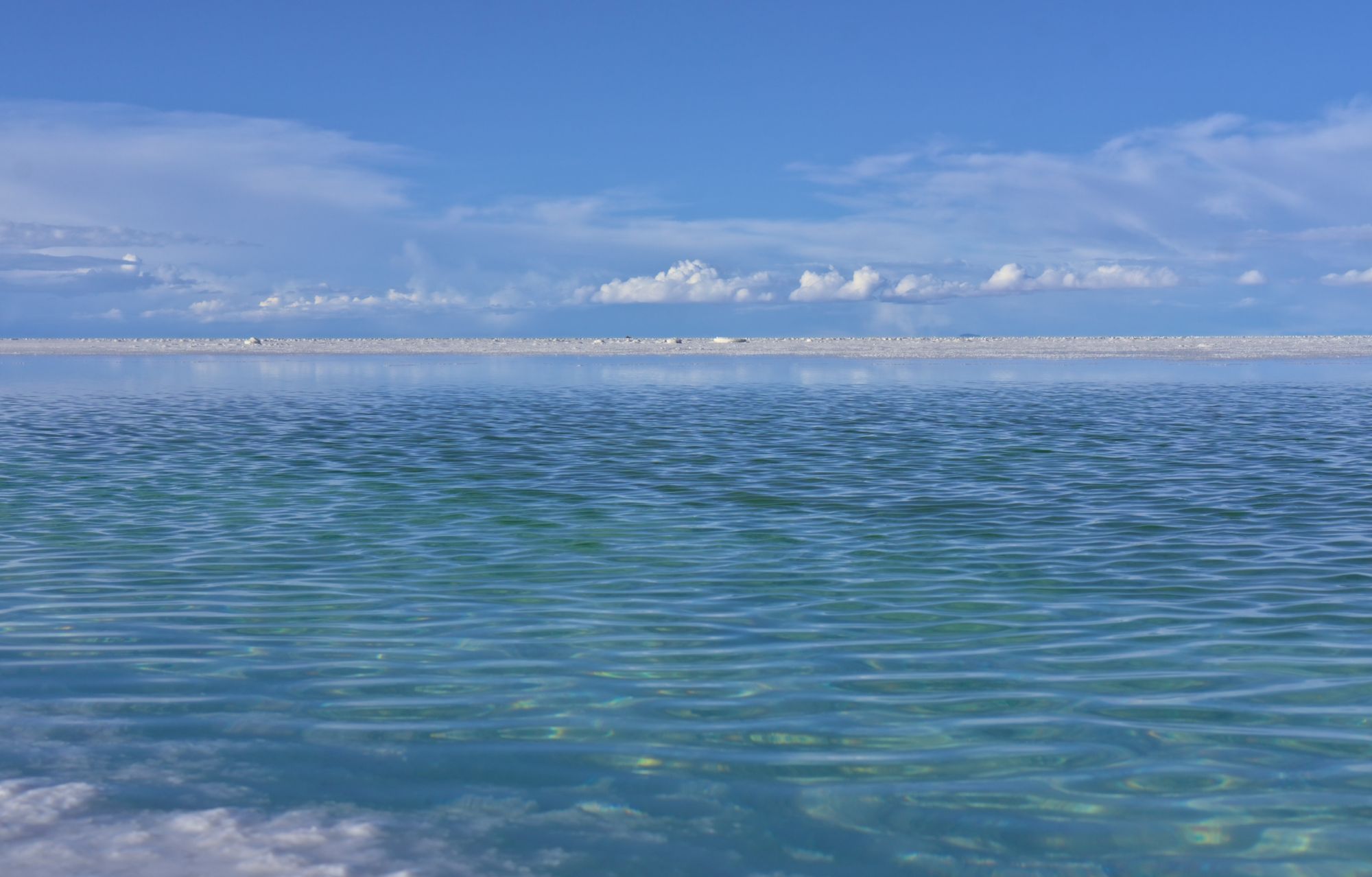
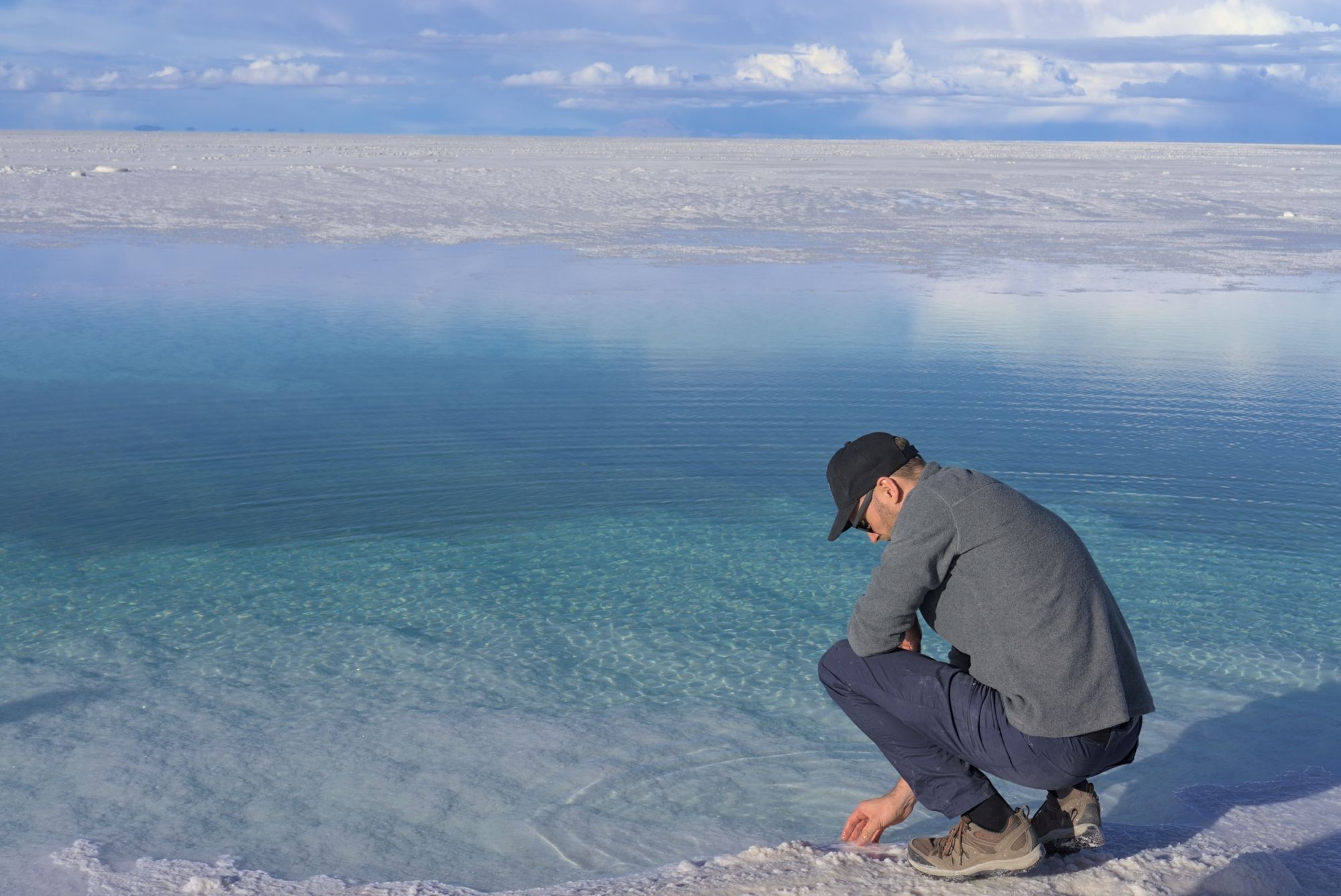
Day 2 - Llamas, Viscachas and Flamingoes
I did not realise how long you would spend riding in the jeep, purely given the distances between places. So we were up early the next day and hit the road again shortly after breakfast. We reached a beautiful location where we got to see llamas in the wild, needless to say they were as curious to see us as we were them.
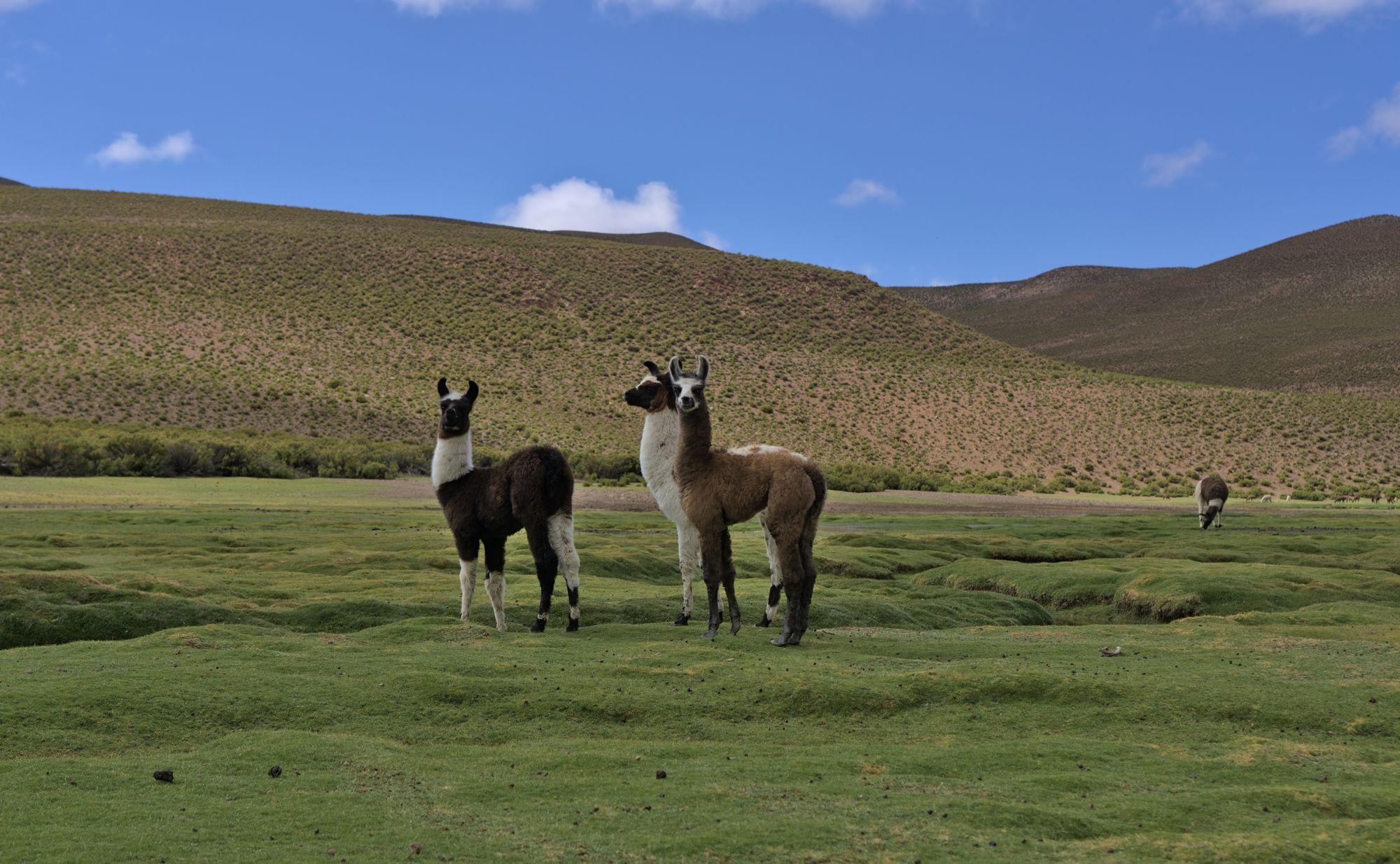
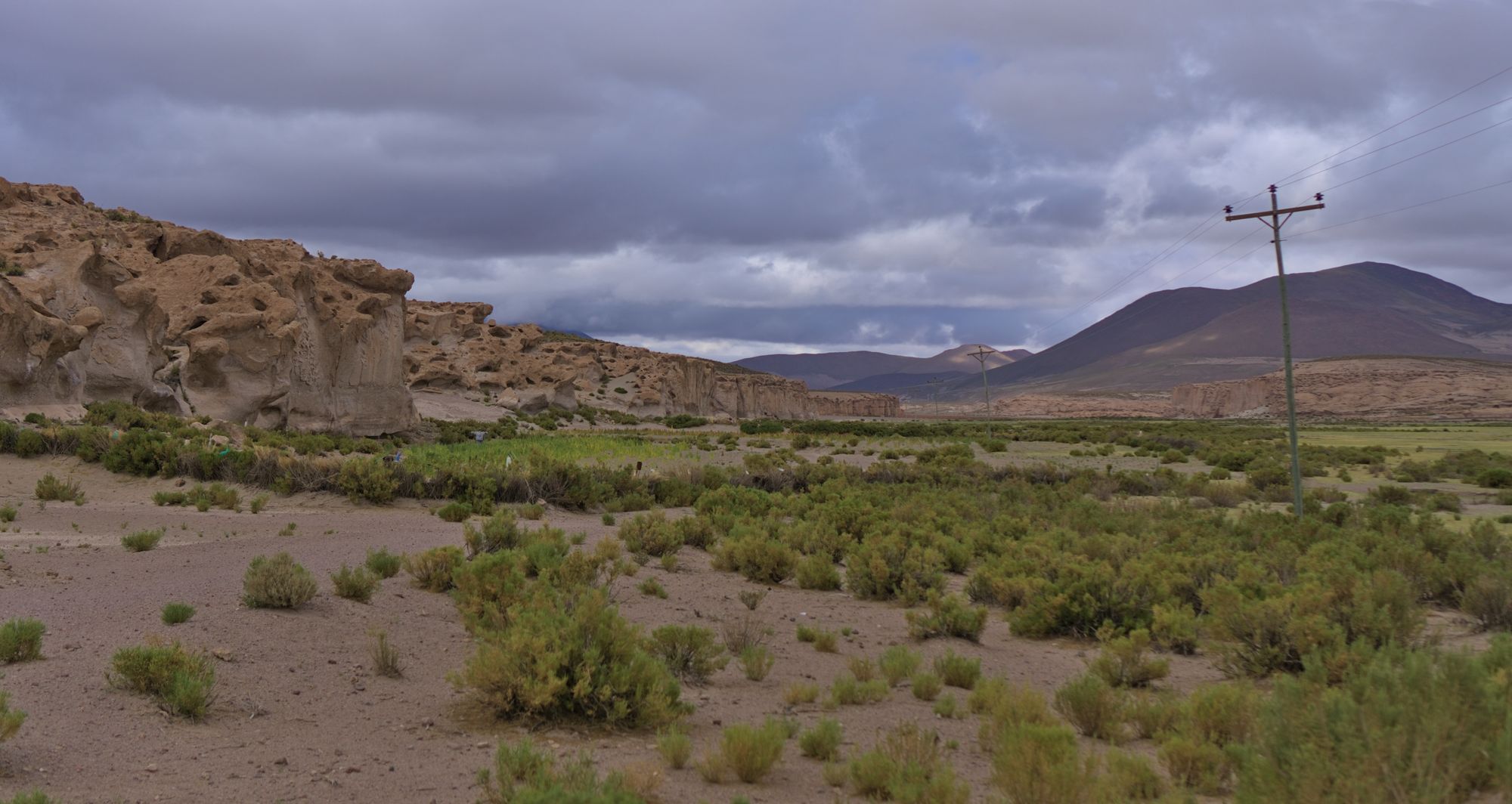
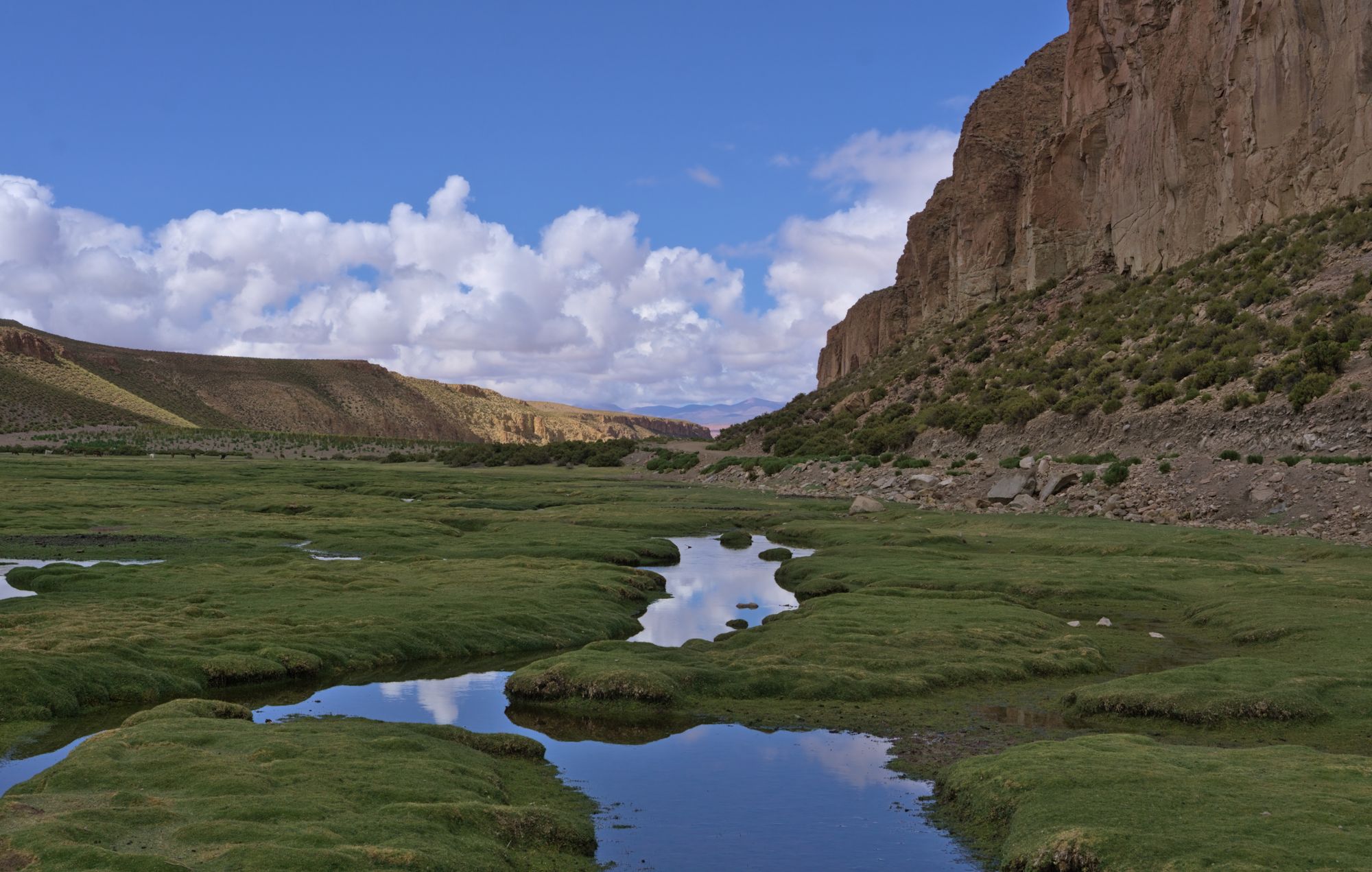
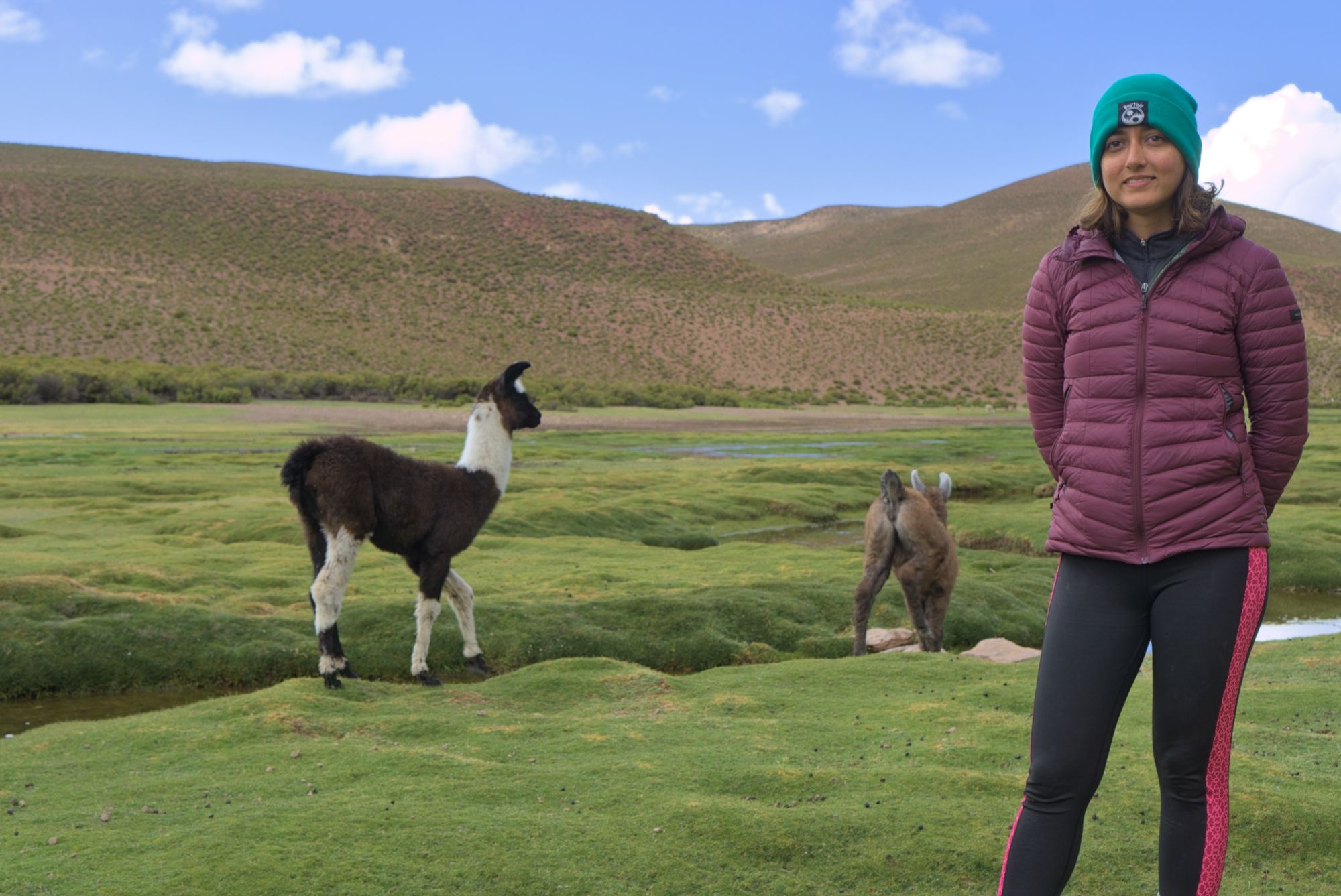
We spent a good amount of time admiring the space and soaking in its serenity and were off on the road again when we got a flat tyre! To be fair, being stranded in the middle of nowhere with incredible surroundings and friends did not seem so bad. This was our second flat tyre experience in Bolivia. The first time was only a few days ago, enroute to Sucre, when the bus broke down at midnight on the highway.
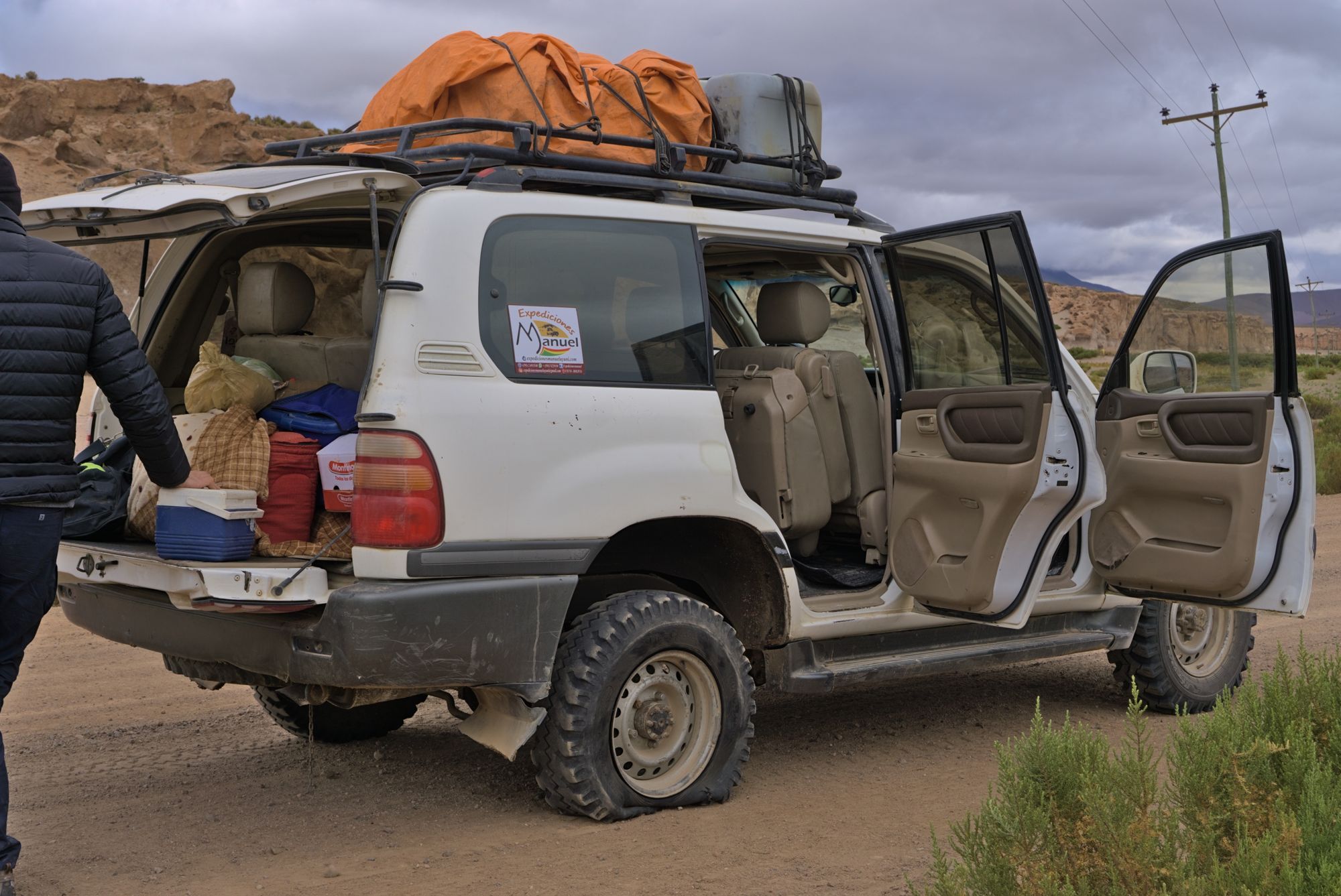

Once Luis changed the tyre we were on our way again and stopped for a little picnic lunch where we saw the cutest rock rabbits called Viscacha. They appeared to be a cross between a rabbit and chinchilla given their rabbit like ears and hind legs. These species are native to South America. The rocks where the Viscacha were residing had a unique moss like plant growing on it called Yerata. It grows on altitudes between 3,200 and 4,500 meters and according to our guide, is estimated to grow approximately 1.5 cm per year, many are estimated to be over 3,000 years old!
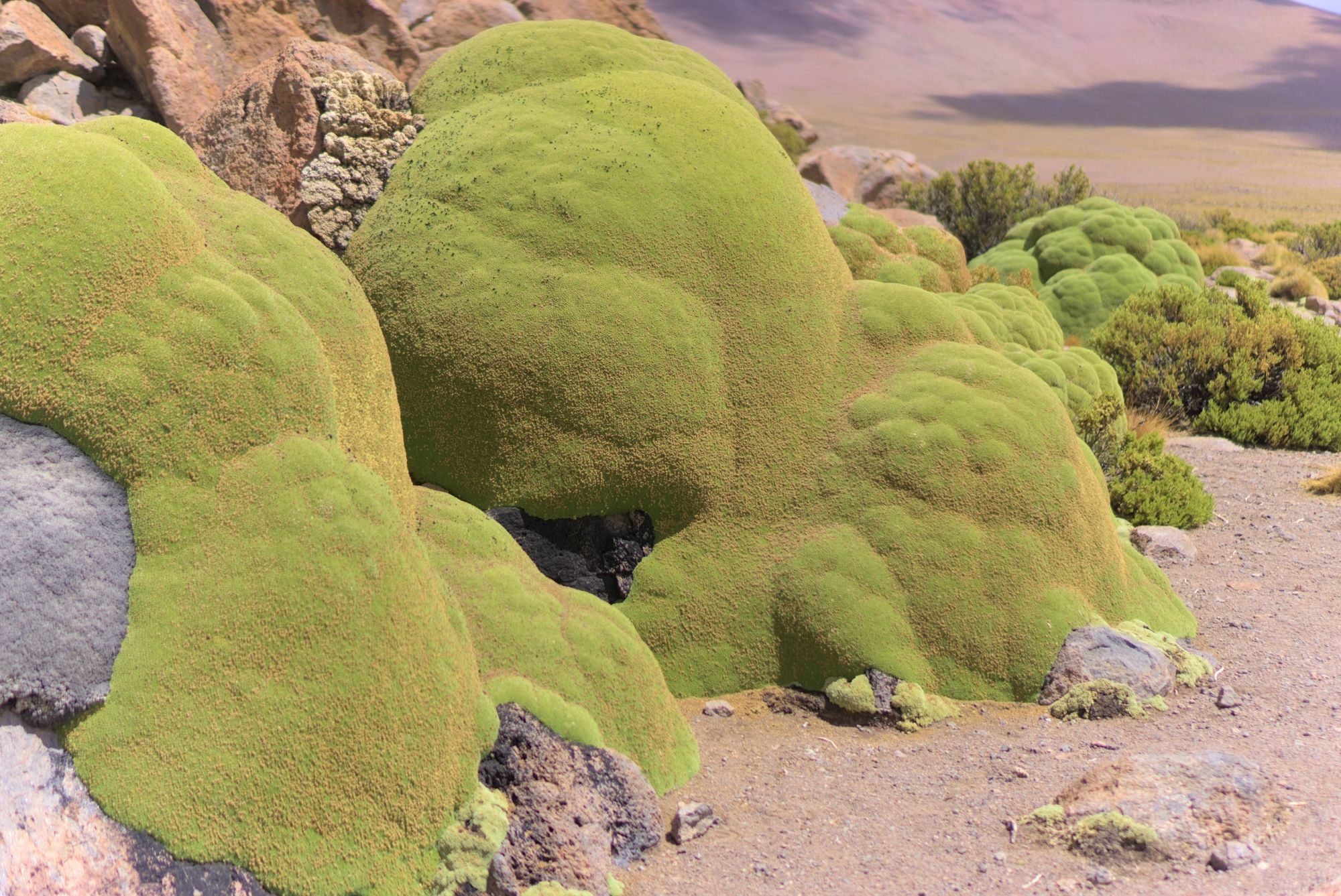
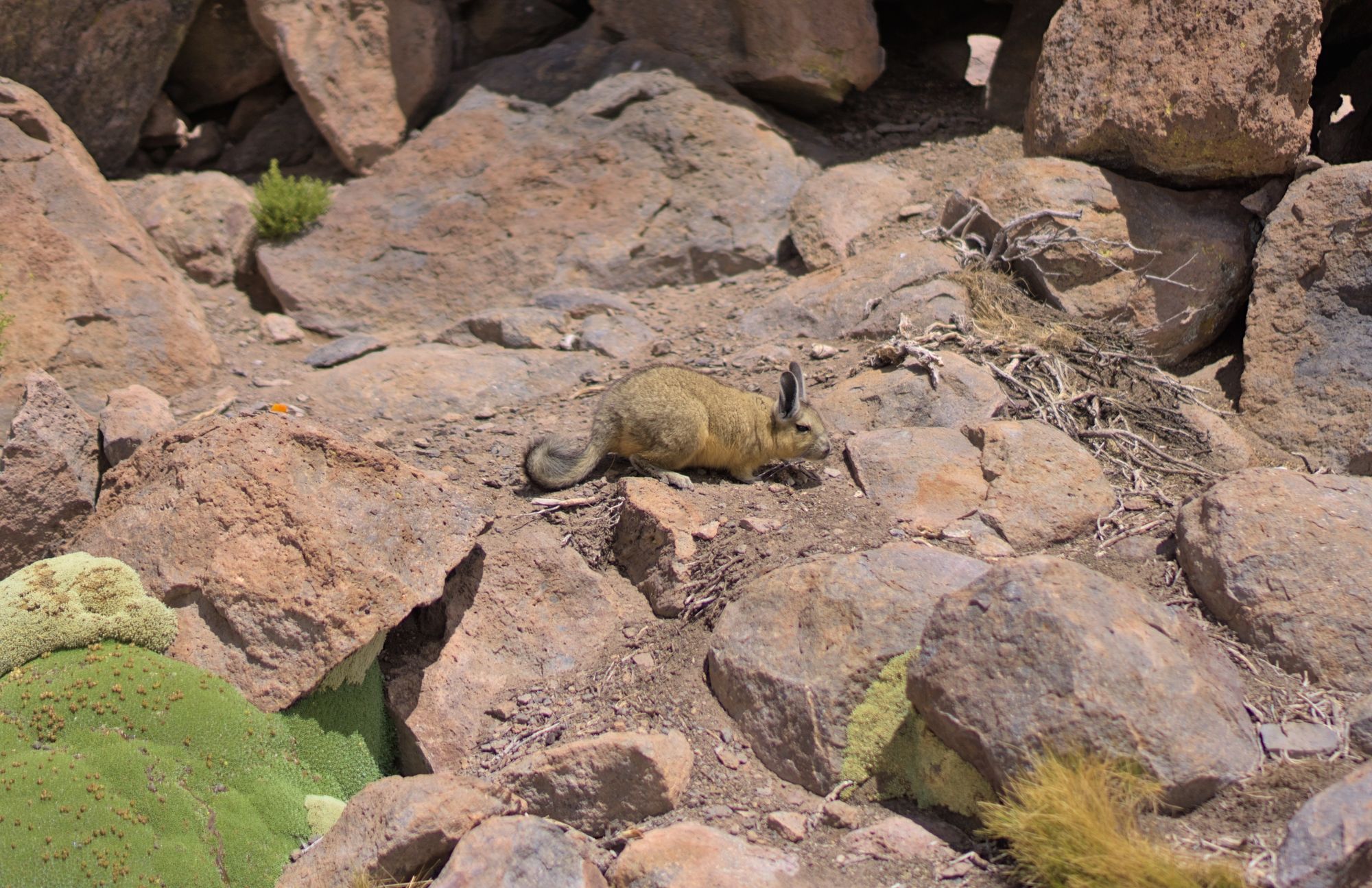
After a filling lunch of chicken, veggies and pasta, our next stop was the valley of rocks, which was such a dramatic change of scenery from our previous location from this morning. That was one thing I had noticed about Bolivia from the start, the ever-changing landscapes. It really is an underrated travel destination.
The valley of rocks as the name suggests is a valley with different rock formations.
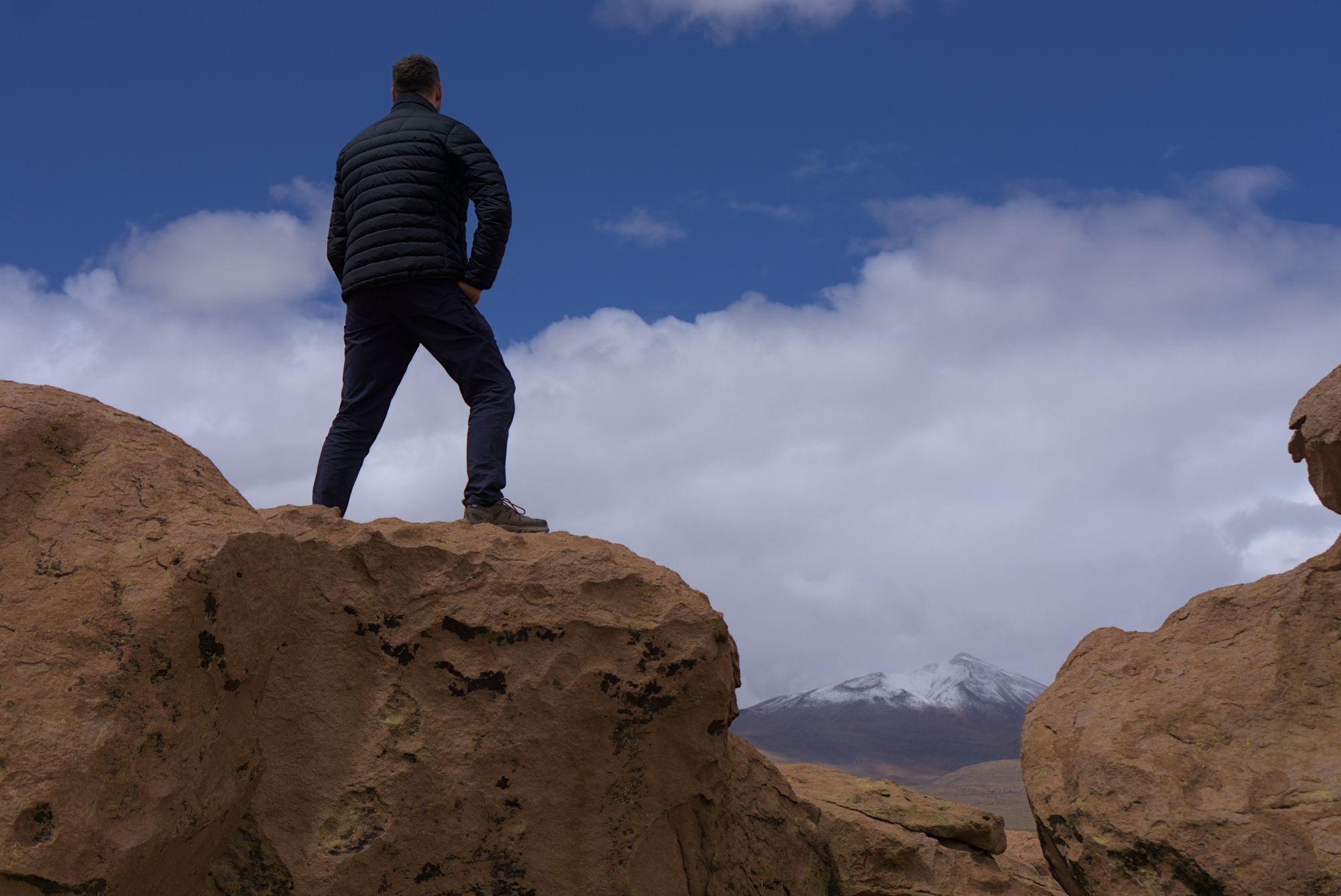
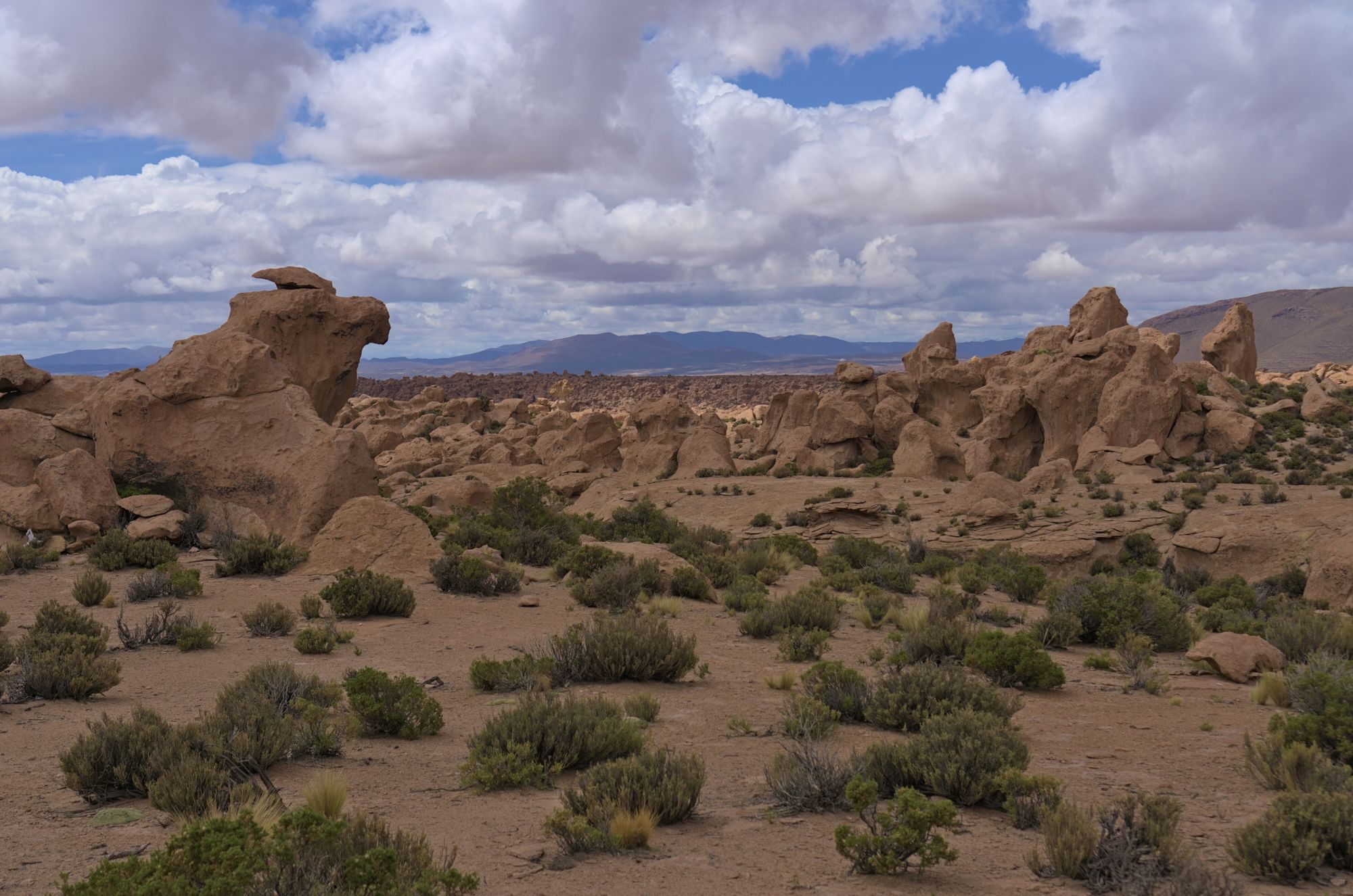
This was a vast area to explore but there were still distances to cover and sites left to see, so we could not spend as much time climbing rocks and boulders as we would have liked. We stayed here for about half an hour before arriving at our next stop Laguna Hedionda, home to thousands of flamingoes.
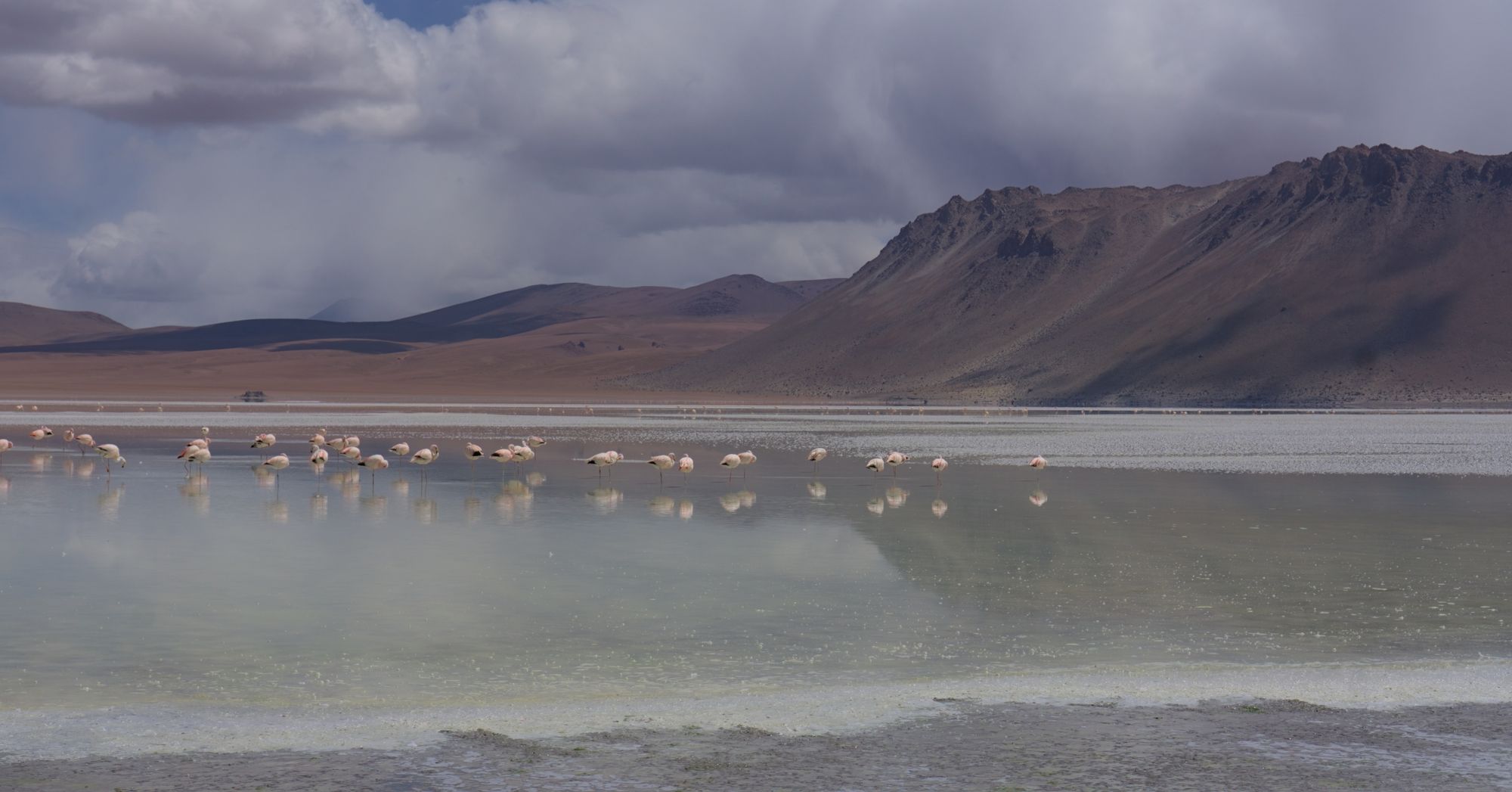
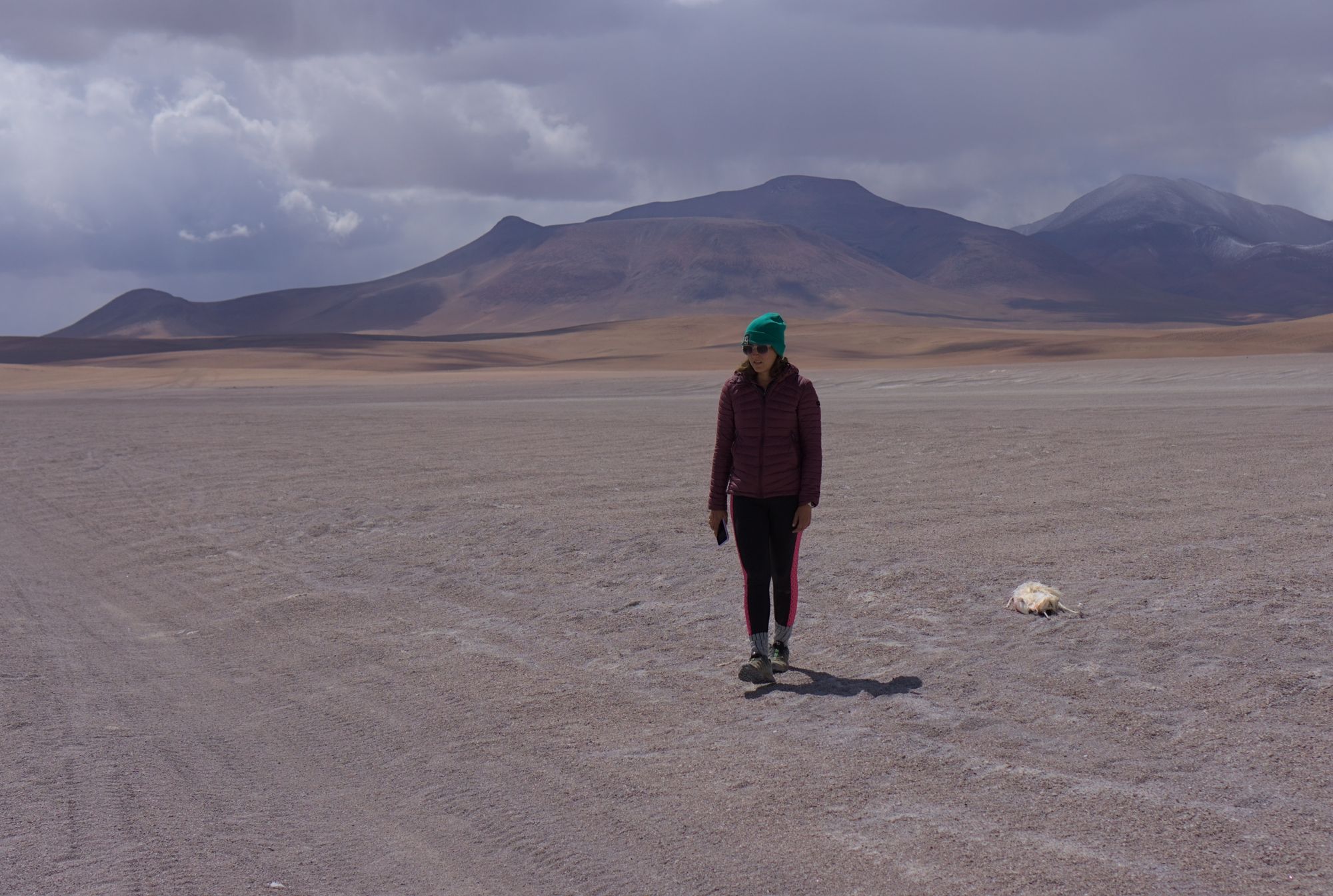
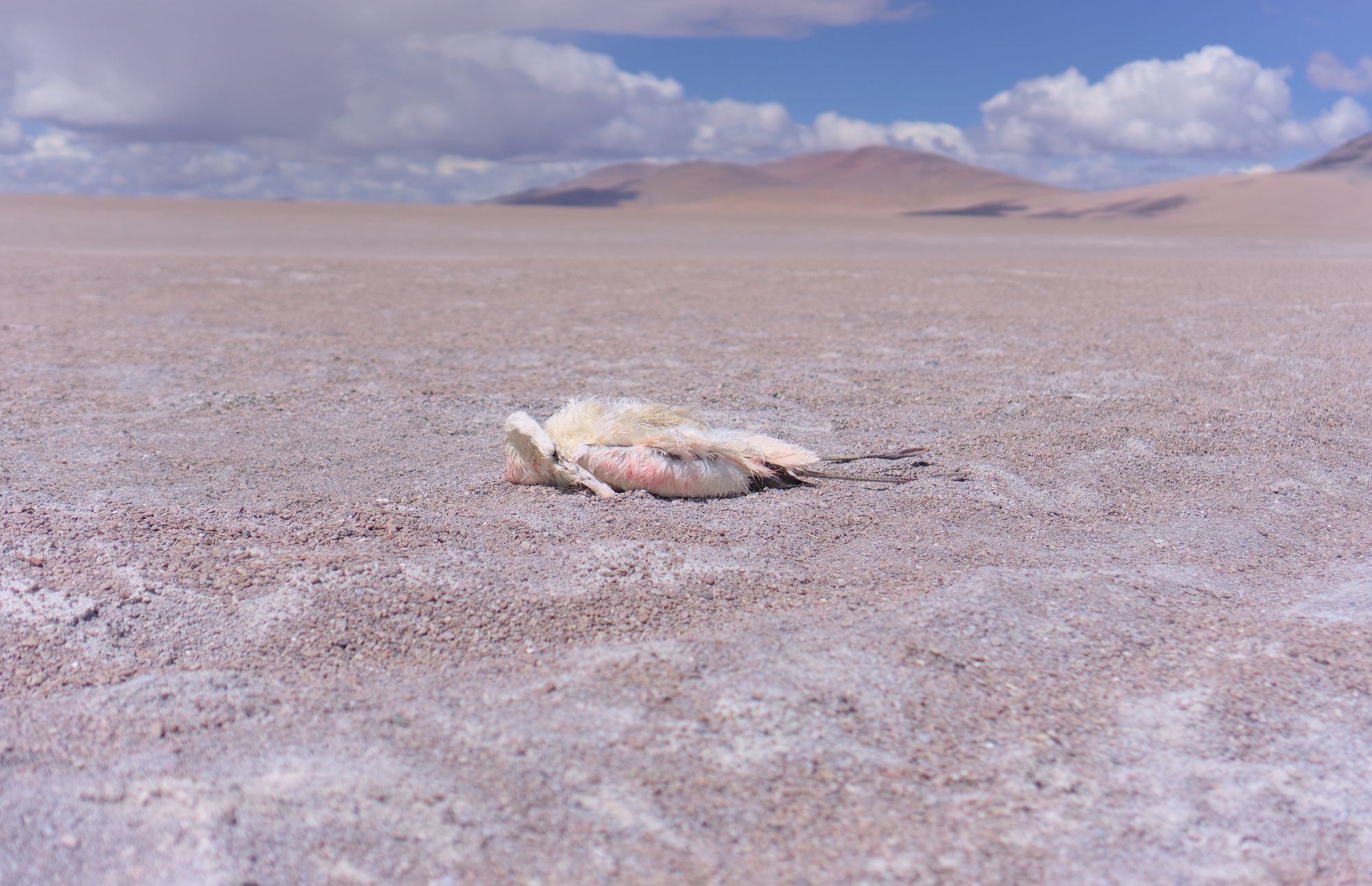
This was turning out to be a very long day indeed! We headed to the Valle de Rocas after this, home to the famous Arbol de Piedra, a tree-shaped rock in the Siloli dessert.
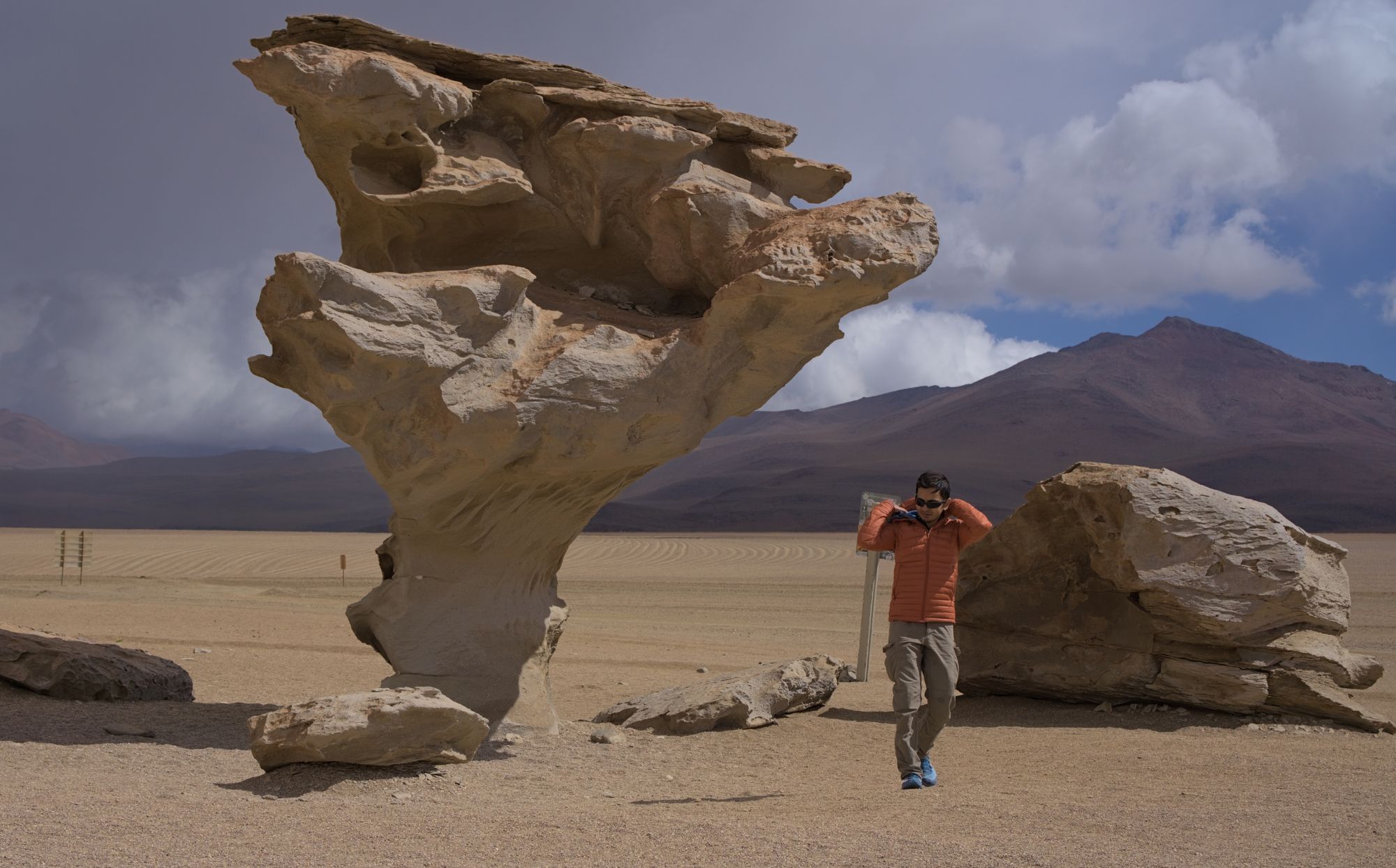
The next stop for the day was Laguna Colorada, the jaw dropping red lake and breeding ground to thousands of flamingoes. The lake gets its colour from sediments in the water and red algae. The colour can appear more pink or orange-y depending on the light conditions and the time of day you visit. We visited around 1500 hours and it had hues of pink and orange both. It was truly stunning.

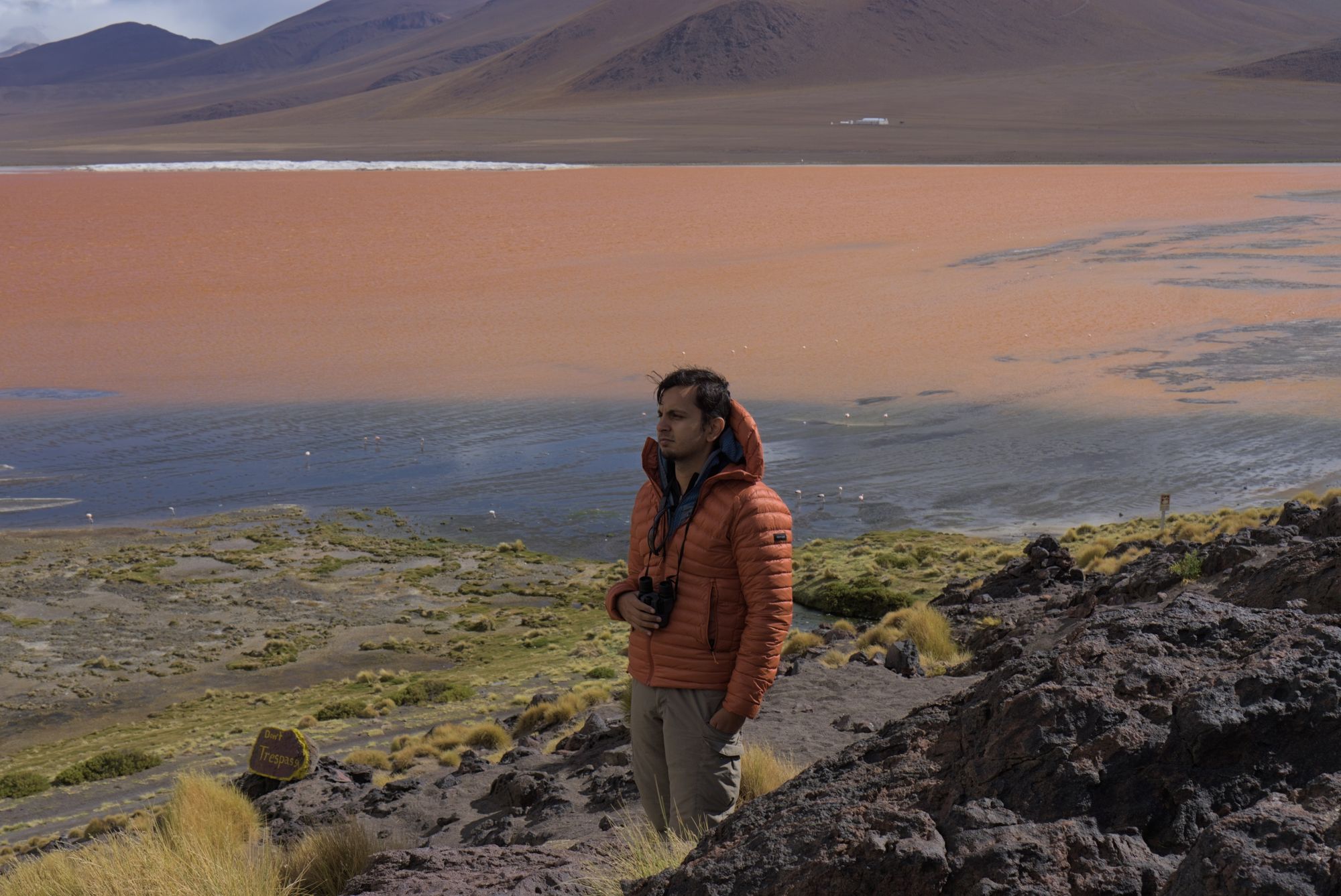
We stopped one more time to view the bubbling muds of the Sol de mañana geyser, before calling it a day and what a long day it had been!
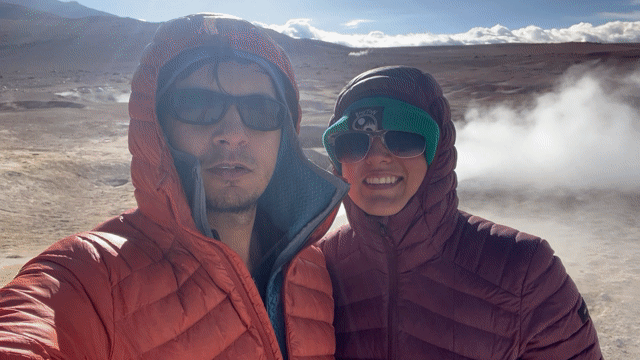
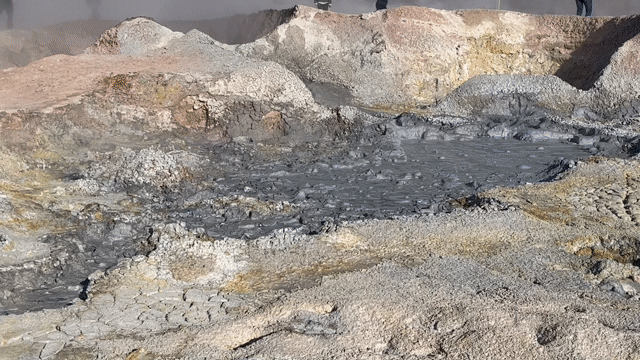
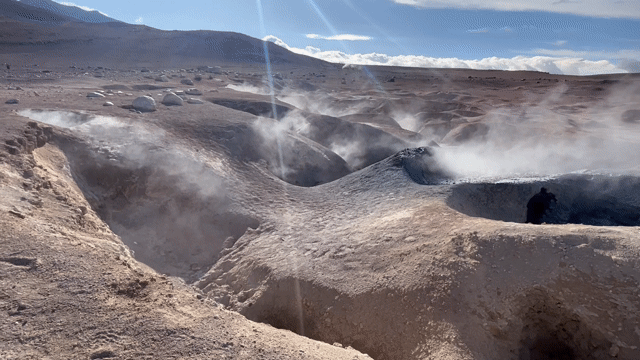
Once at the accommodation, Munis complained of feeling under the weather and wanting to rest. We thought it may be tiredness from being on the road for two days and some recuperation will do him good. However, when he refused evening snacks and then also dinner, our antennae went up and we knew something was not right. A few hours after Munis complained of feeling unwell, he had an upset stomach and nausea. We had had our first case of food poisoning of our travels and who knew we were going to be in for a riveting night; Munis can describe the feeling better than I can because I was just a bystander, but without being too graphic lets just say it involved projectile vomiting and sweeping sick off the floorboards of the shared toilet and our bedroom.
Day 3 - Last day and drive back to Uyuni
After a thrilling night Munis woke up feeling a lot better *phew*. The last day did not involve as many activities as the previous two. We stopped maybe a few times, first to explore the Dali mountains, so called because the barren scenery resembles the paintings of Salvador Dali, but we did not get many pictures because a) it was extremely cold, b) we were tired from not getting enough rest last night, and c) Munis being our main photographer wanted to take it easy.
The rest of the drive was spent relaxing and enjoying the scenery pass us by. We made various stops for snacks and then lunch and finally arrived in Uyuni to say our goodbyes.
Perhaps my only qualm would be that the trip was too packed and we did not spend enough time at one site to fully enjoy it, but that's often the case with planned tours like this and it wasn't something one could DIY. Nonetheless, it turned out to be one helluva trip, where we met amazing people and saw the best of what Bolivia has to offer.


